Smithsonian National Museum of Natural History
Being born in Washington, D.C. I have been going to the free Smithsonian museums all my life. My favorite as a child was the Smithsonian National Museum of Natural History. I am happy to report that the Museum of Natural History remains a favorite for my children, even in their teenage years.
Jump Ahead To
Overview
The Smithsonian National Museum of Natural History (Museum of Natural History for short) started in 1846 as part of the original Smithsonian. It expanded and opened in its current location in 1910 across the Washington Mall from the original Smithsonian Institute Building.
Over the years, the Museum of Natural History has gone through many renovations. However, its basic structure remains pretty much the same. Entrance is free and the only major downside is the crowds. This is one of the most popular museums in Washington.
Over the years there have been a couple of add-on options that cost extra. The Butterfly Pavilion on the second floor by the Insect Zoo costs $7.50. It is extremely popular and there can be long lines. We have never done the pavilion because we have a similar one near us at the San Diego Safari Park.
There used to be an IMAX theater but that was closed in 2017 because they were not selling enough tickets. Personally, we never saw a movie because we have plenty of similar theaters in San Diego.
If you do spend money it will likely be at the dining areas (see below) or the massive gift shops located on the bottom floor by the Constitution Avenue entrance. These gift shops are an experience in themselves. Several times we have gone the Museum of Natural History just for the gift shop.
Our most recent visit was the day after Thanksgiving (Black Friday) in 2019. It was crowded, but the only issue was waiting in line about 5 minutes to go through the security checkpoint. Even when it is not crowded it is important to plan your visit as there are all kinds of things to see.
The Smithsonian Channel has a nice introductory video to the museum.
Location and Logistics
The Smithsonian National Museum of Natural History is located in the heart of Washington, D.C. on the National Mall that runs between the Washington Monument and Capital. Next door on one side is the Smithsonian National Museum of American History and on the other is the National Gallery of Art. Across the street is the National Archives.
We have often traveled by Metro when our family lived by a Metro station. The Smithsonian Metro stop is in the center of the Mall a short distance from the museum. However, often we like to eat before or after, so we go to either the Federal Triangle Metro or the Archives-Navy Memorial-Penn Quarter stop. Both are a short walking distance to the Museum of Natural History and unlike the Smithsonian Metro they are located by many restaurants.
In recent years, we have driven into the District and parked in one of the many garages. We use the app SpotHero. This allows you to put in your destination and find all available parking spaces. Generally, a garage close to the museums will be about $20 for most of the day. If you are willing to walk further, you can find lower prices.
Overall, I consider central Washington, D.C. fairly easy and reasonable for transportation and parking. In order to have more time seeing sites I recommend paying a little extra to be close.
The Museum of Natural History has two entrances. The main entrance is right off the National Mall. This is the entrance you use if you are coming from the Smithsonian Metro. It leads you right into the main Rotunda area by the giant elephant.
Most of the time we come in the Constitution Avenue entrance on the opposite side of the building. This entrance is on the ground floor by the gift shops and the museum café. An escalator takes you up to the Rotunda.

Note the museum uses the British system where the lowest floor is the ground floor and the floor above it is the first floor. The Museum of Natural History has three floors for visitors with most exhibits on the first and second floor.
Either way you come in you will need to go through a security check. You need to go through a metal detector and have your bags examined. There will often be long lines, but it moves rapidly. On the Constitution Avenue entrance there are some cool pieces on display.

The biggest challenge is allocating your time. Many times, we have gone to the Museum of Natural History to focus on only a handful of specific areas. Other times we have skimmed through the museum trying to see as much as possible.
The museum stores a collection of 145 million specimens and artifacts. Of course, only a small fraction will be on display at the Museum of Natural History. Most items are stored or out on loan. Nevertheless, the amount of stuff to see is overwhelming and it is best to narrow the focus of a visit.
The Museum of Natural History focuses on several broad areas:
- Animals, both present day and going back to the dinosaurs and beyond
- Geology with a huge collection of gems and minerals
- Human culture and evolution from caveman times to present day
Thinking of it in those terms can help narrow your focus and determine how much time you want to spend in each area.
On a side note a great way to get excited about a visit to the Museum of Natural History and Washington, D.C. in general is the movie Night at the Museum: Battle of the Smithsonian.
Animal Exhibits
Animals of all kind are at the heart of the Museum of Natural History. Some of my earliest memories are the elephant in the rotunda, the dinosaur bones and the life-size model of a blue whale.
The blue whale is gone, but the elephant remains, and the dinosaur exhibit reopened in May 2019 after a massive overhaul. This was the final step in a major renovation of the entire main level of the museum.
It should be noted that the Museum of Natural History is not the place to go and see live animals. The animals on display are stuffed, fossilized or otherwise preserved. The only exception is the Insect Zoo and the fish tank in Ocean Hall.
The three main animal exhibits split off directly from the elephant in the rotunda (Check out this Smithsonian Channel video for an overview of the elephant). From the entrance facing the elephant to the left is the mammals exhibit, behind the elephant is Ocean Hall and to the right is the newly remodeled Fossil exhibit (aka dinosaurs).
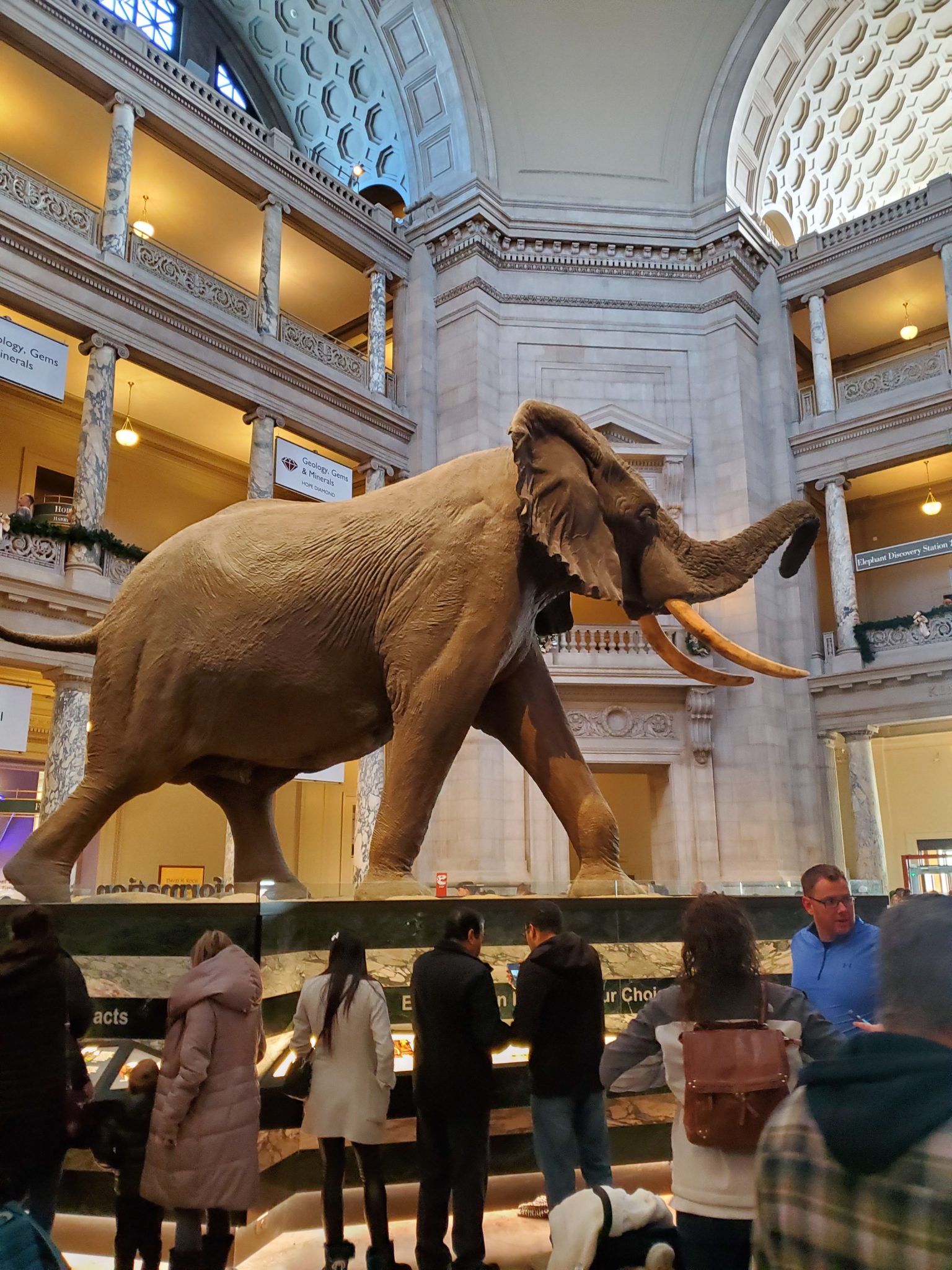
Over the years we have watched major renovations done on what is now Mammoth Hall, Ocean Hall and Hall of Fossils. For years, much of the museum was closed for these overhauls. With the 2019 opening of Hall of Fossils it seems the museum is ready for another 100 years through the 21st century.
Hall of Mammals
The Kenneth E. Bering Family Hall of Mammals opened in 2004, the same year our eldest daughter was born. This is a 25,000 square foot display of 274 mammals as well as many fossils.
Most of the animals are shown posed in an active form. In other words, you can see a life-size example of a lion attacking its prey.
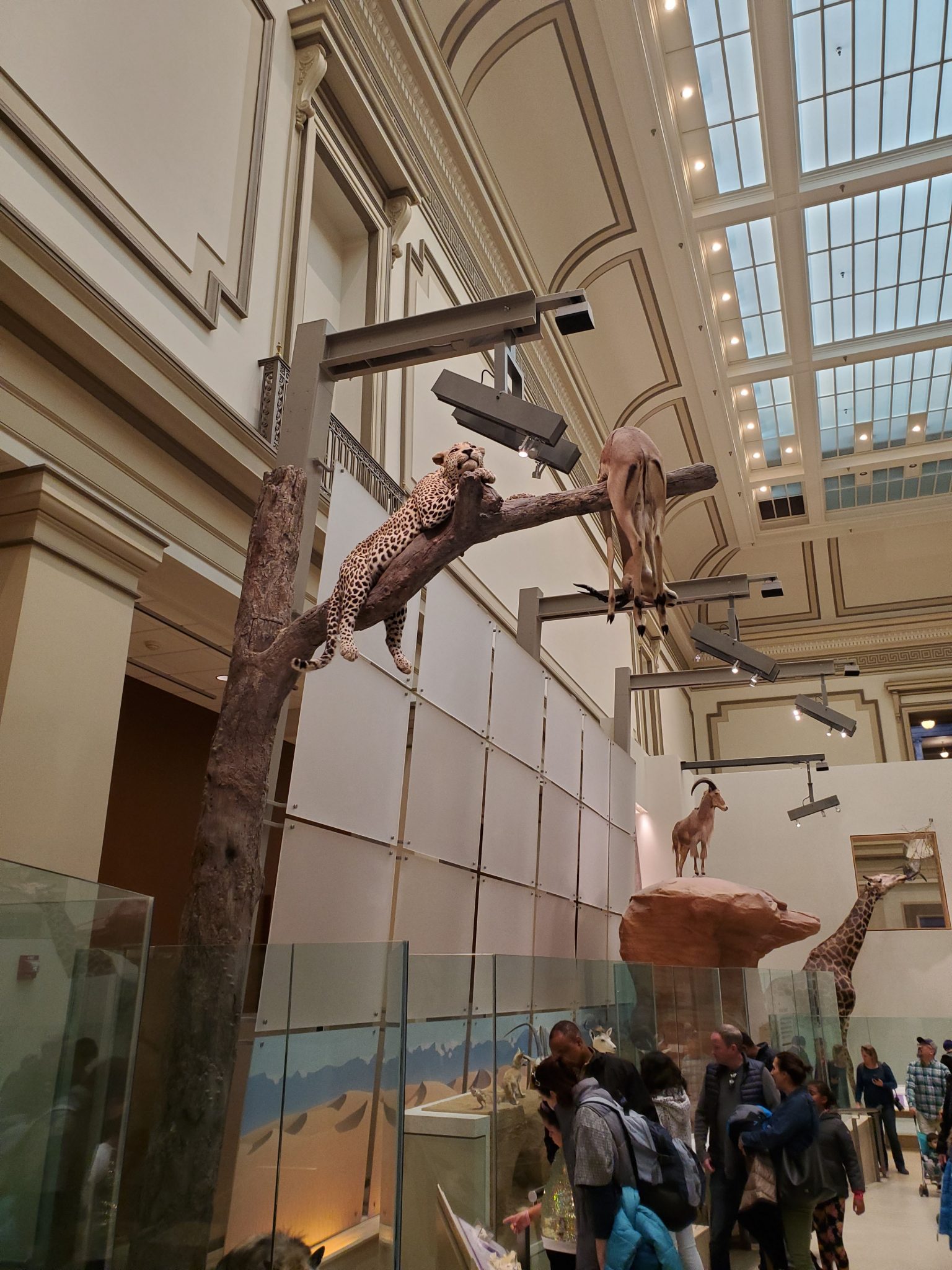
An interesting note is that when the Museum of Natural History opened in 1910 many of the initial mammal exhibits were from President Teddy Roosevelt’s African expedition after he left office in 1909.
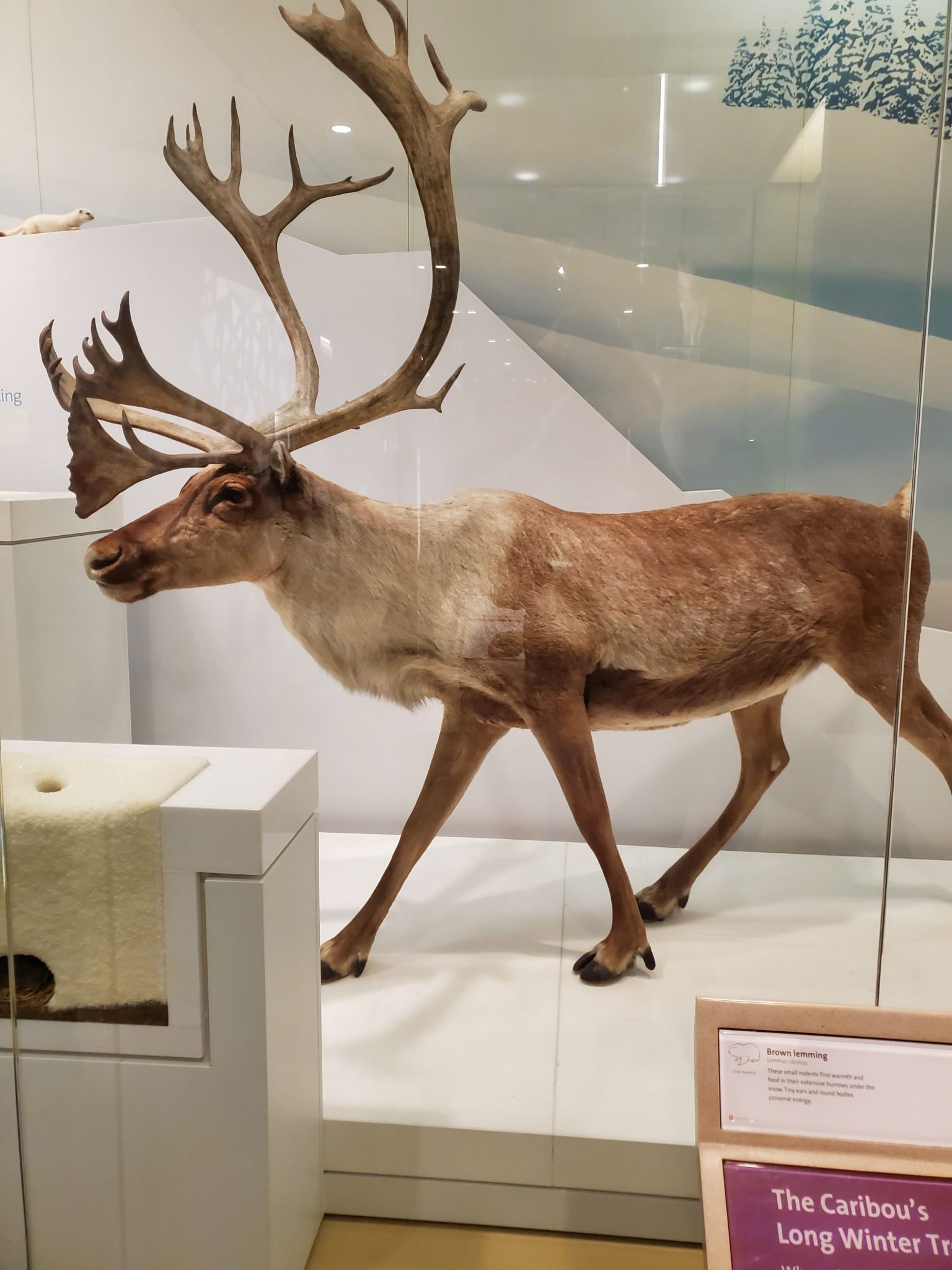

Ocean Hall
The Sant Ocean Hall opened in 2008. This was right in time for our son to celebrate his third birthday which was themed for the Pixar movie Finding Nemo.

This 23,000 square foot exhibit has over 600 specimens. The blue whale is gone, but there is a life-sized model of a right whale and a 25-foot giant squid. The fish tank also has live clown fish (Nemo) and blue tang (Dory). For years this has been a favorite of our kids.
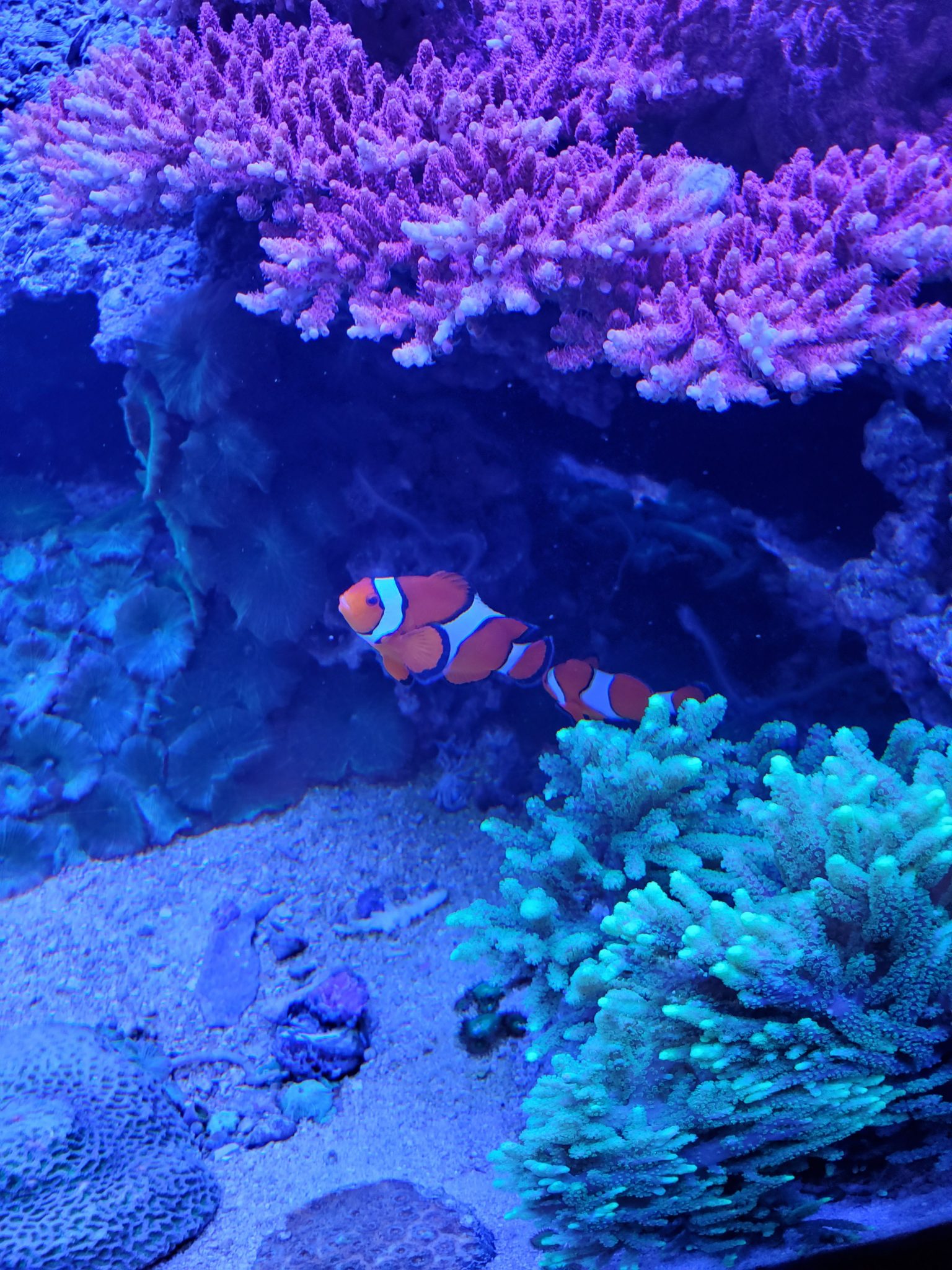
Fossil Hall
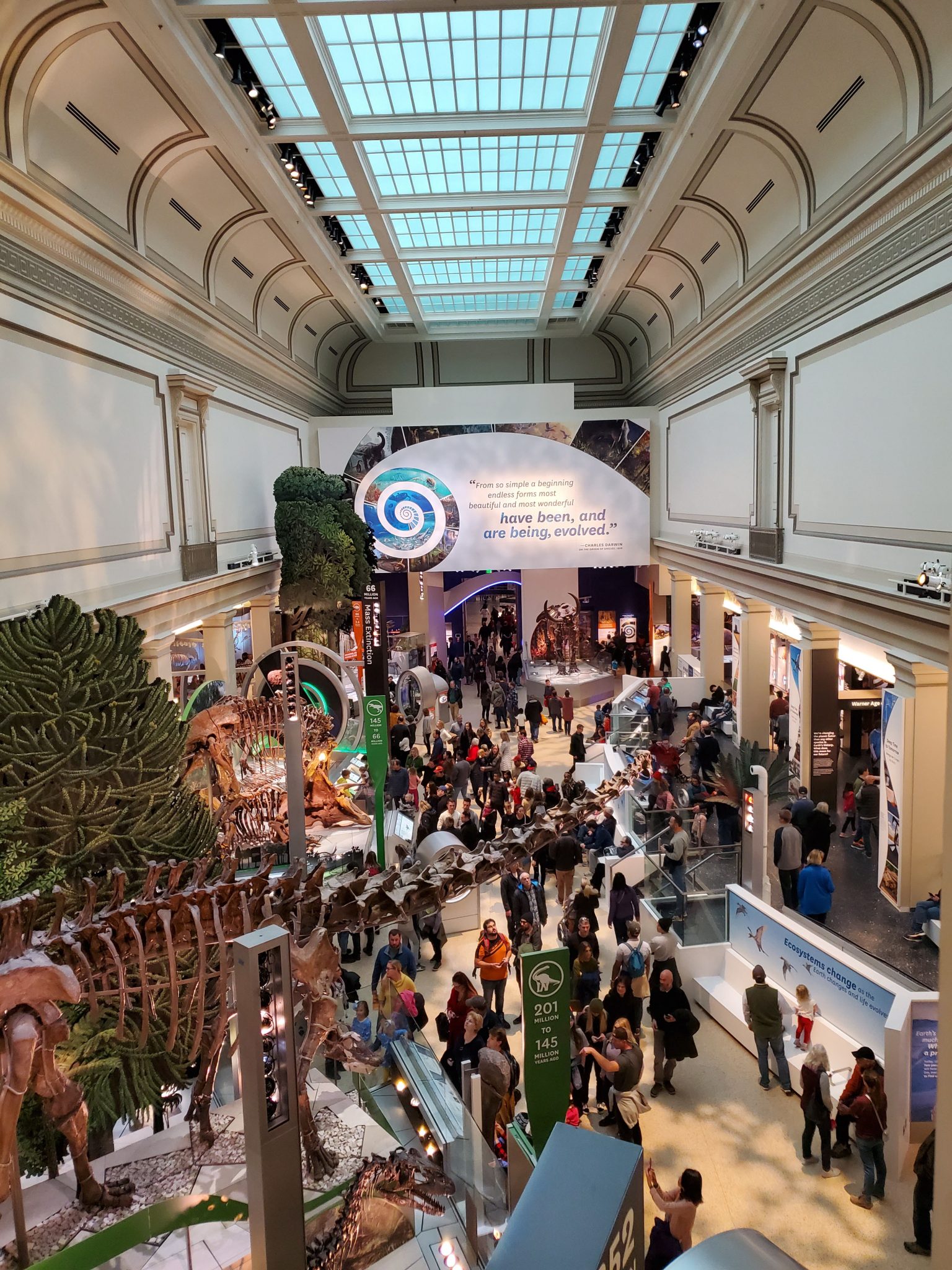
The David H. Koch Hall of Fossils Deep Time opened in 2019. Originally this was Dinosaur Hall, but the name was changed to give a broader perspective on the entire history of Earth going back 4.6 billion years.
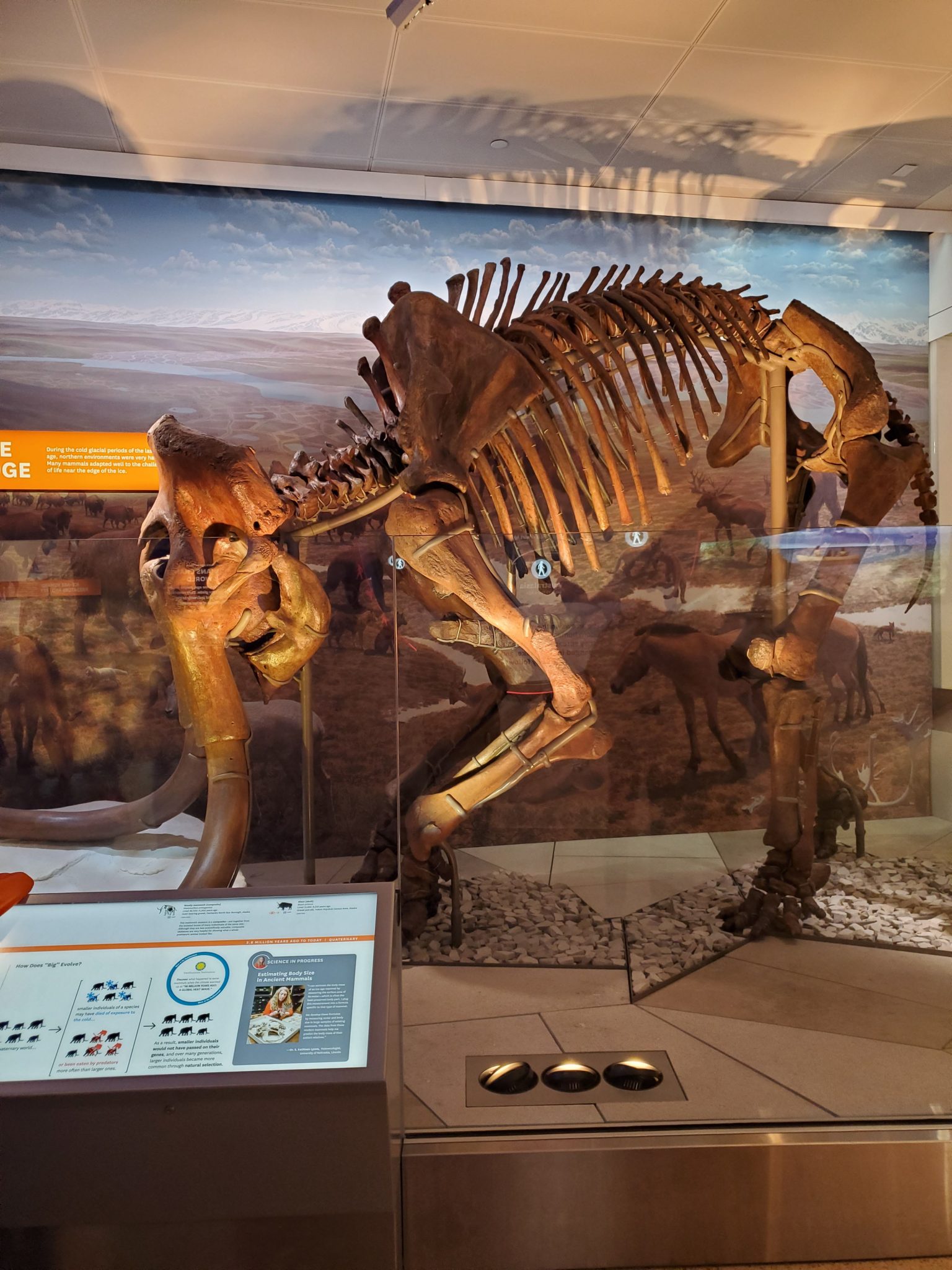

At 31,000 square feet this is the largest exhibit ever. There are still dinosaur bones but they are only part of a bigger picture. The focus is on looking at how mass extinction has been an ongoing process of evolution.
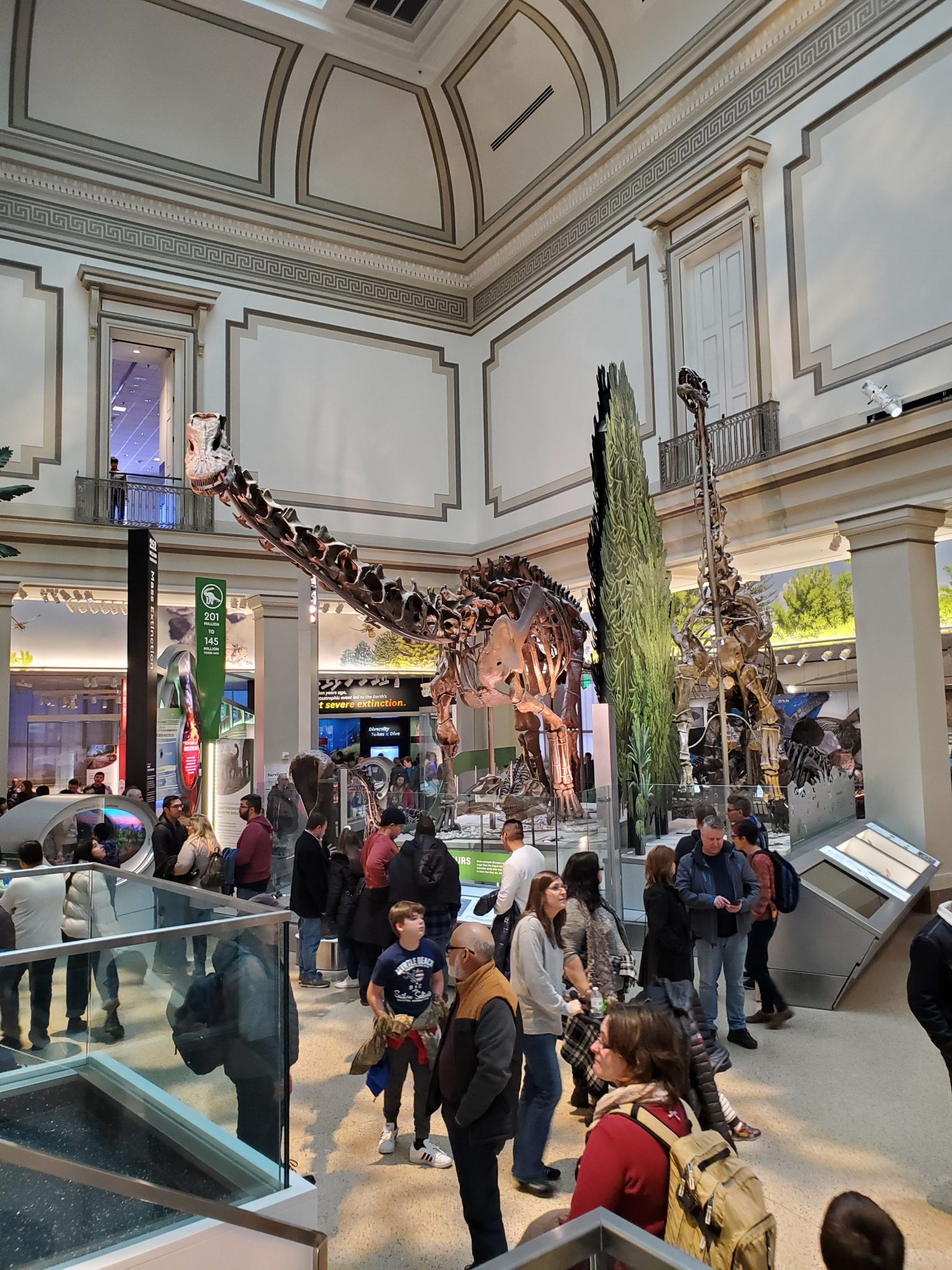
I will admit that with only one visit we have not given fossil hall the complete attention it deserves. However, we were excited to see that the Fossil Lab was still in place. This is where you can watch actual scientists at work on fossils.
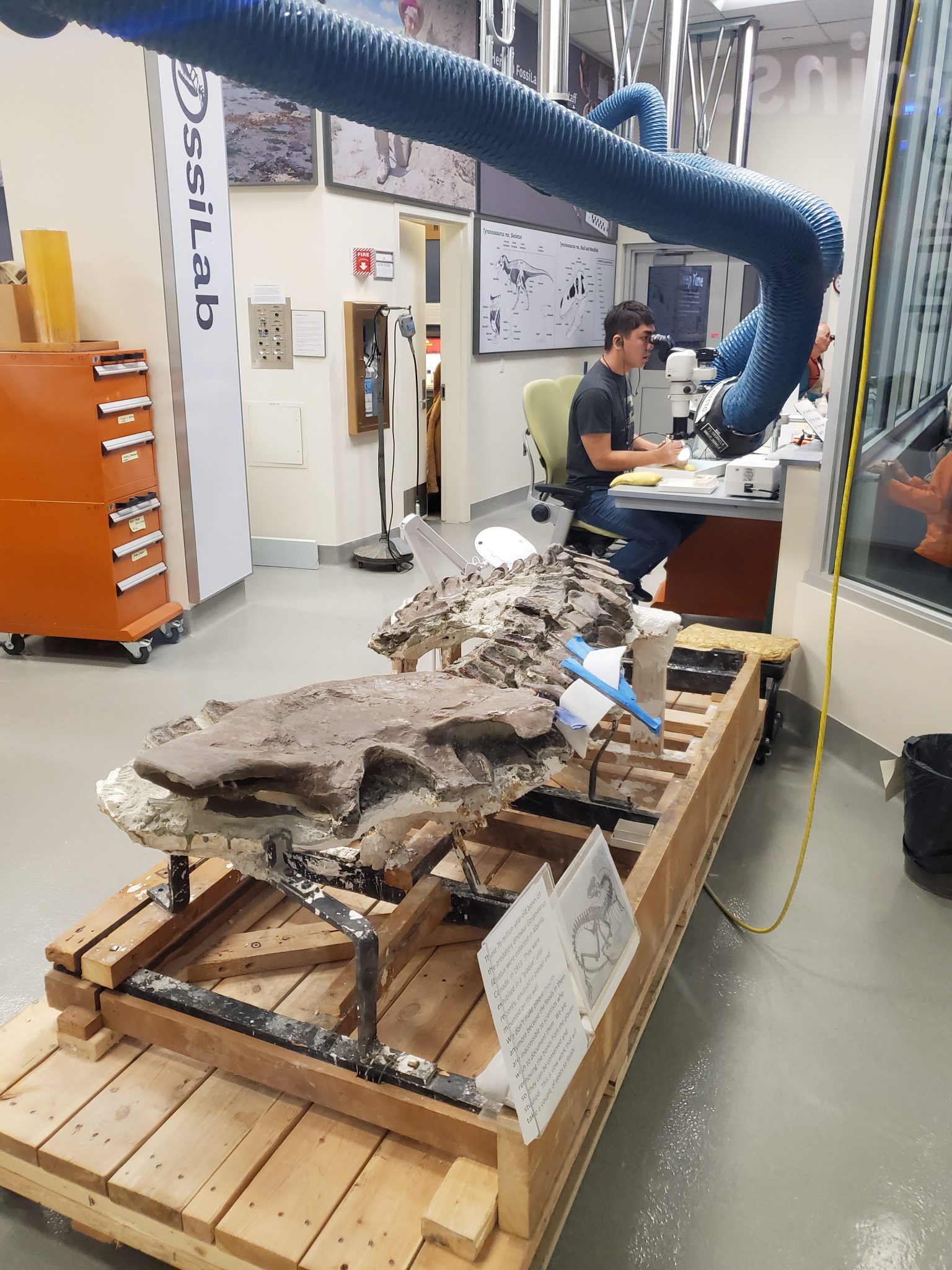
Bone Hall and Insect Zoo
The upstairs floor of the Museum of Natural History also has some animal exhibits. In many cases this takes me back to my childhood.
Bone Hall actually has signs saying you are going back in time to the way museum was in the 1960s. This was a favorite of my childhood and remains a favorite of my children. It is one of the first places they like to go when visiting.
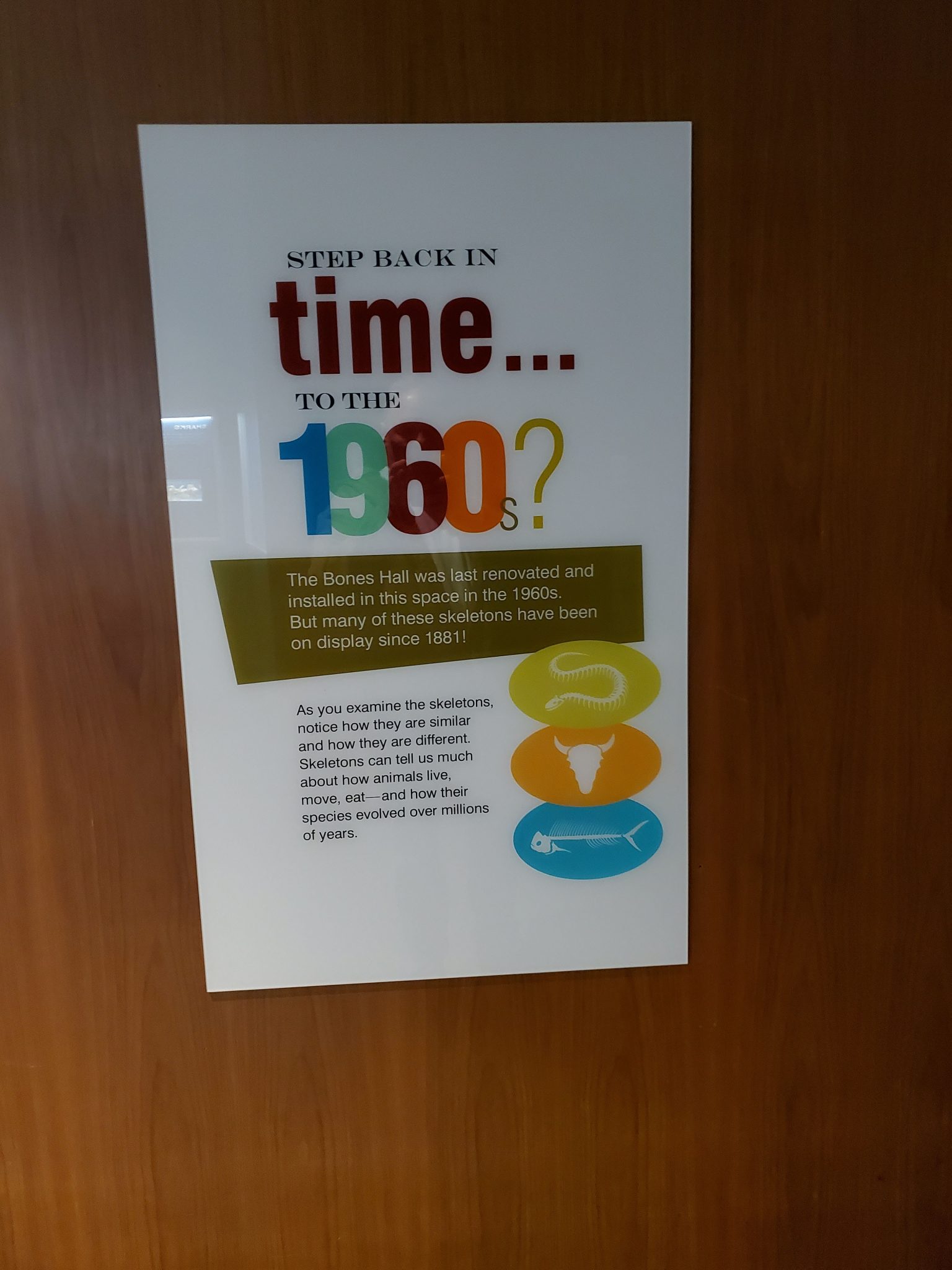
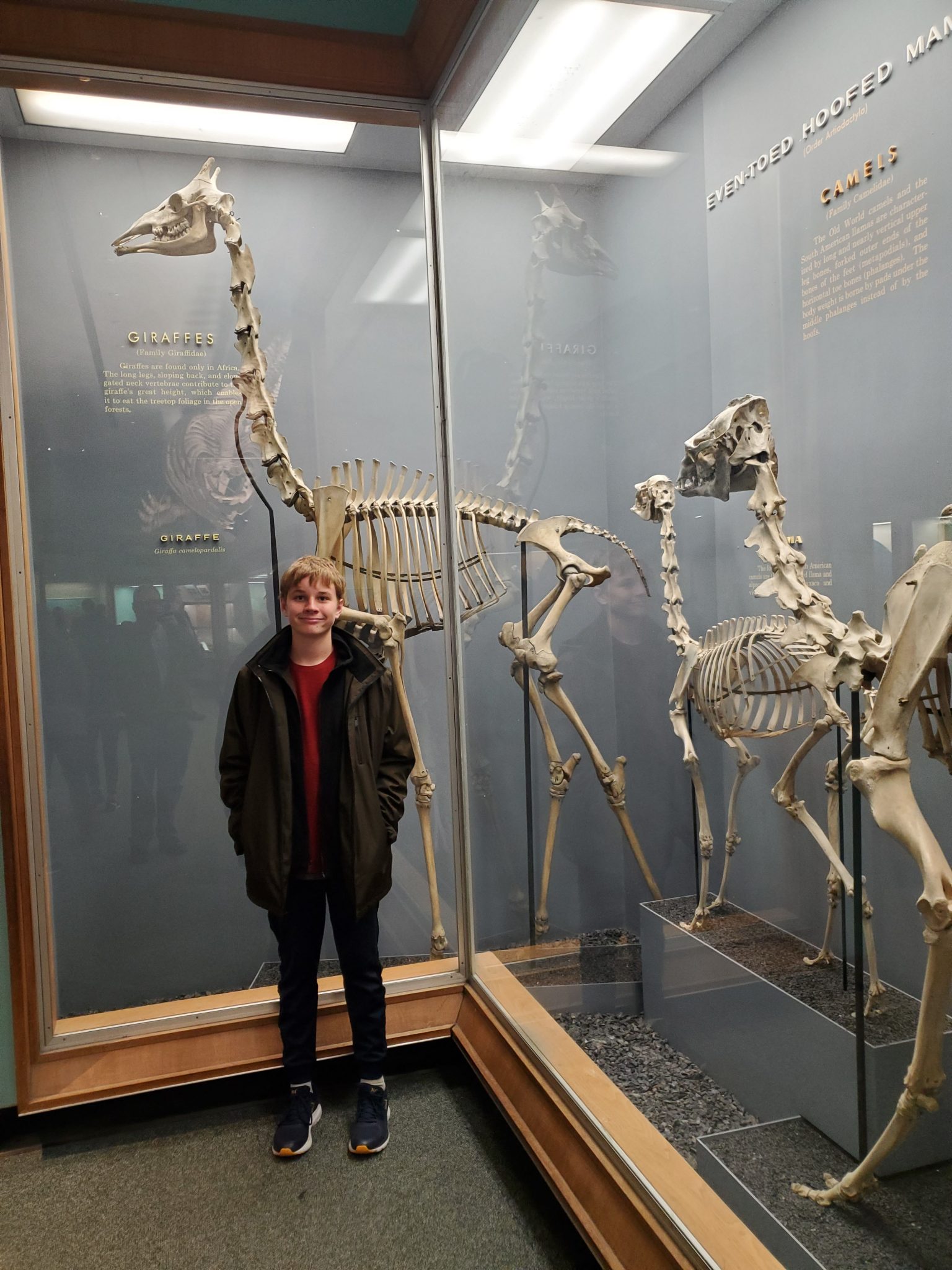
As its name implies Bone Hall is an exhibit of all kinds of animal bones including fish, whales, turtles, giraffes, to household dogs and cats. There is a 3D iOS app you can download (Skin & Bones) to see what these animals look like in real-life (we have not done that).
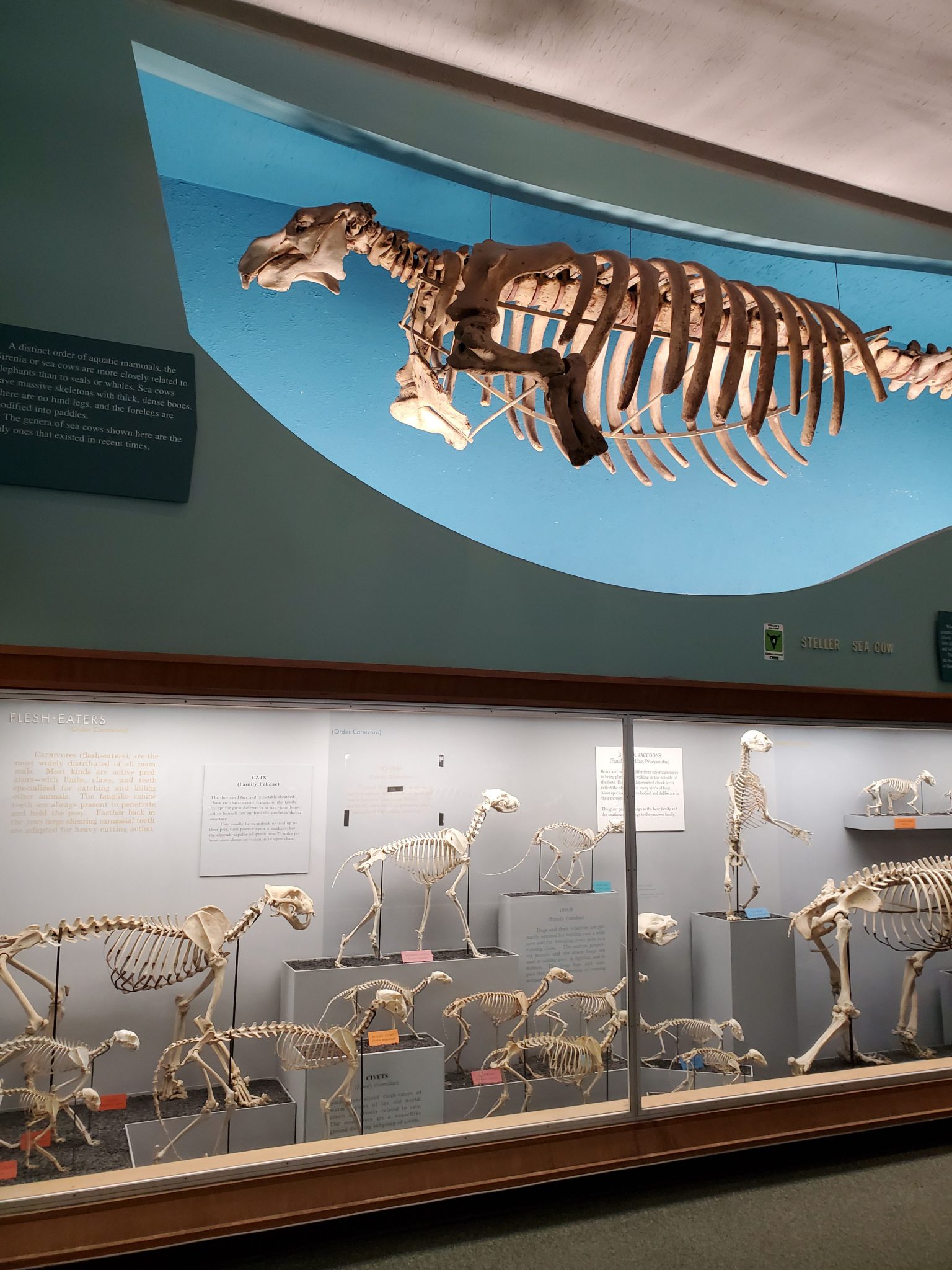
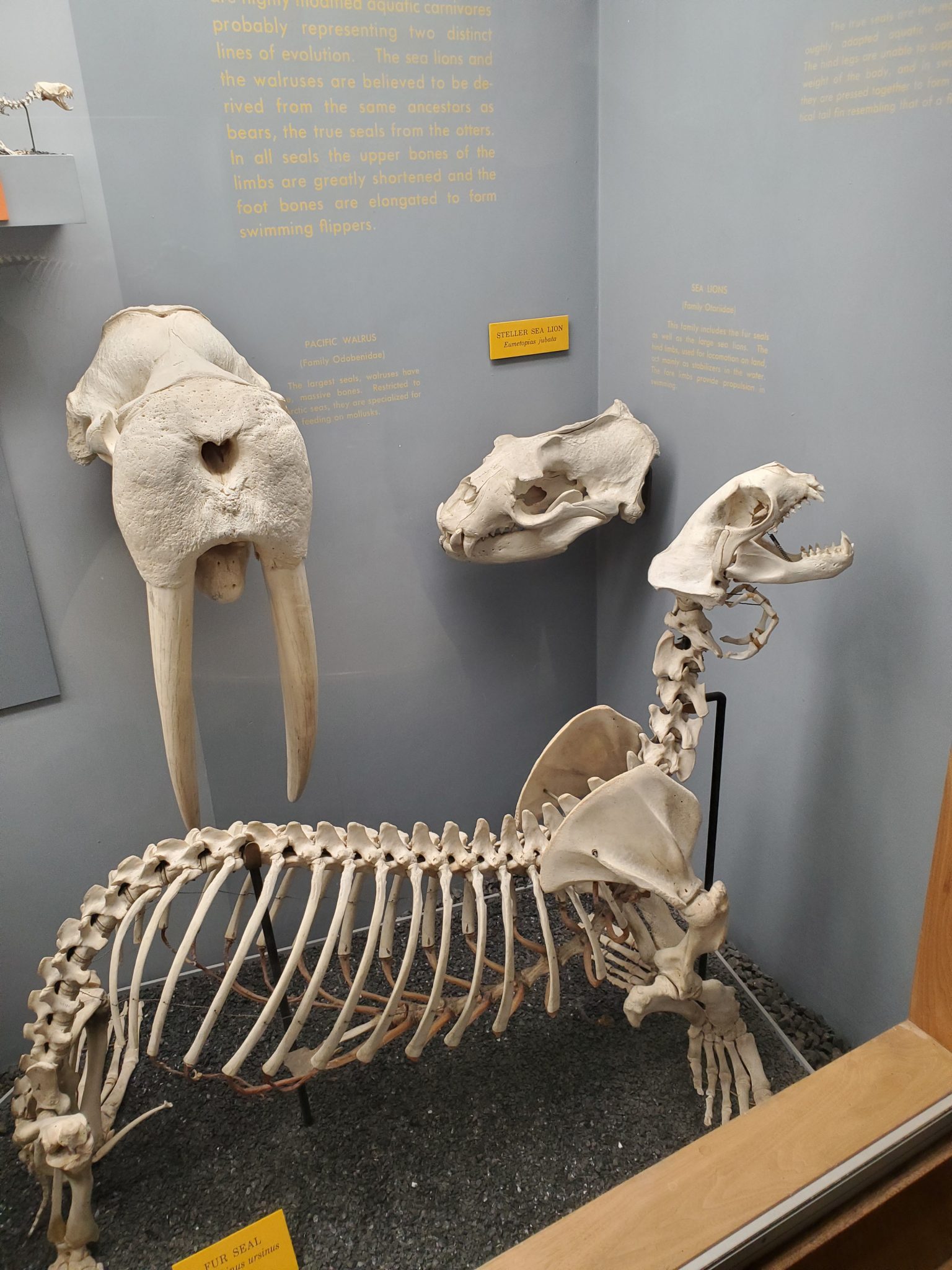
Bone Hall leads to the O. Orkin Insect Zoo which opened in 1976. Once again this was a favorite for both myself as a child and my kids growing up. The Insect Zoo has live insects. A popular attraction is when visitors get to hold live cockroaches and tarantulas. There is also a beehive that leads to the outside of the museum.
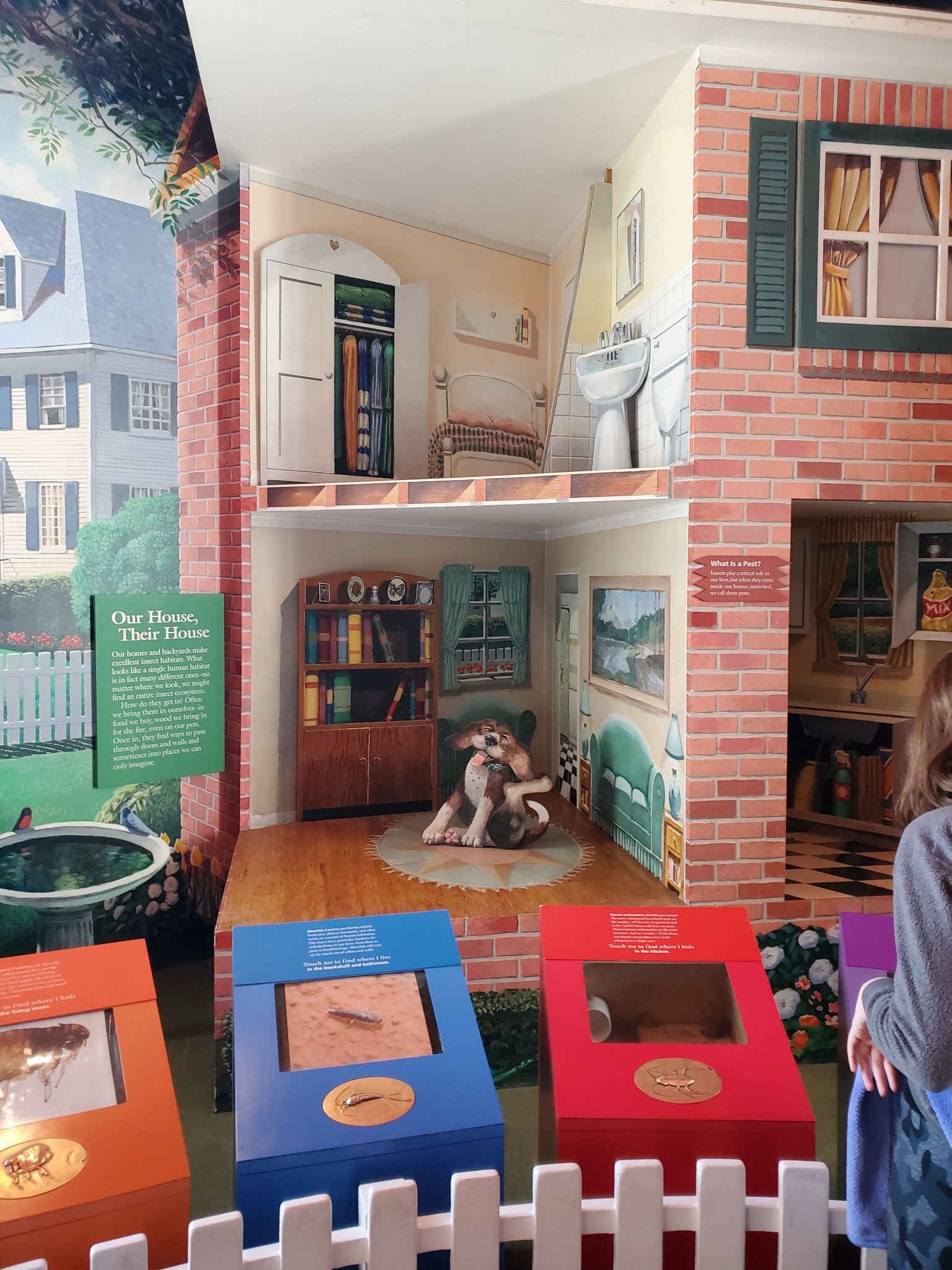
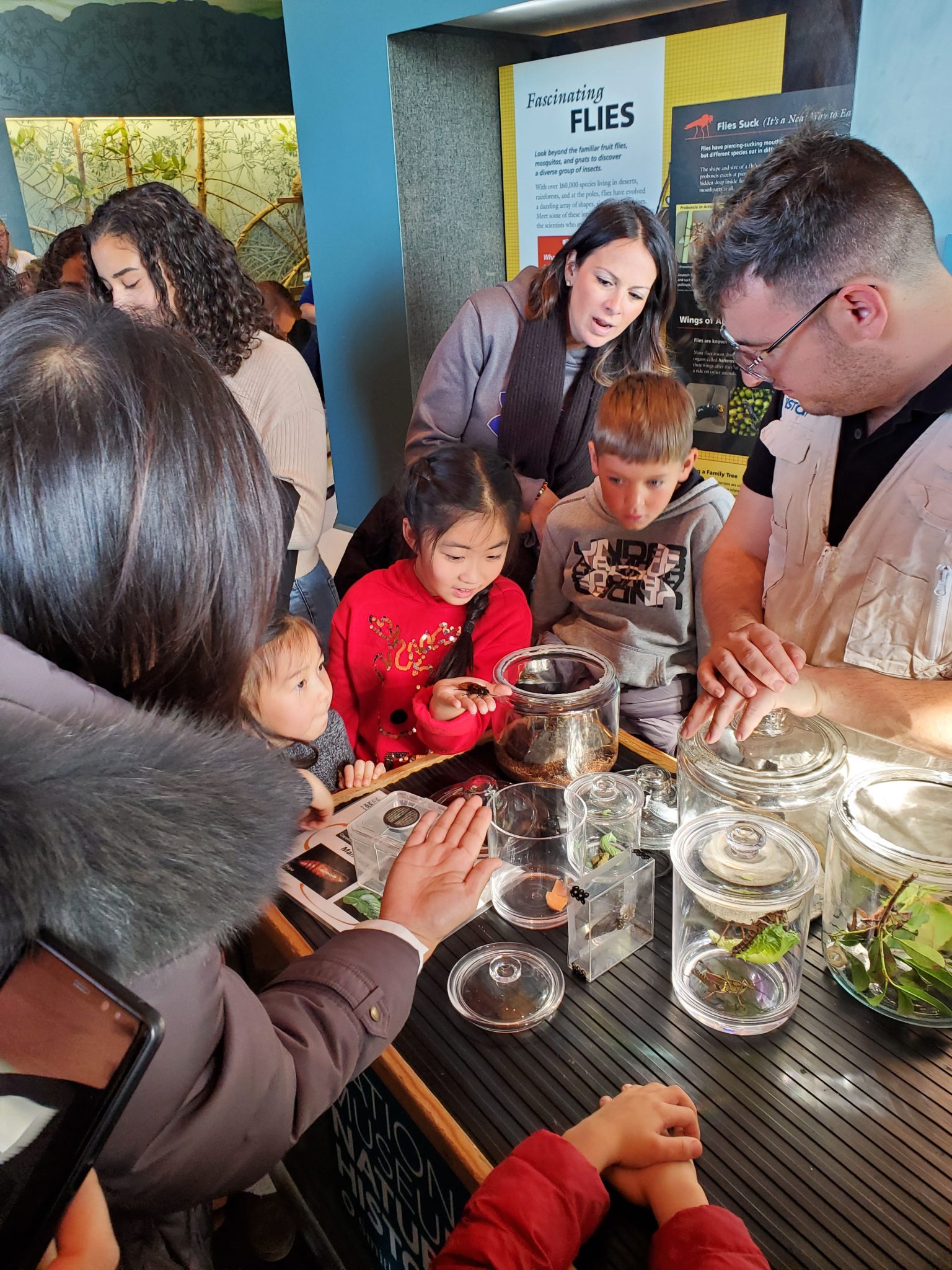
The Butterfly Pavilion is a add-on paid attraction next to the Insect Zoo. We have never done this. Tickets are timed and lines can often be long. On Tuesdays entry is free (normally $7.50 a person) but you need to pick up a time ticket at the museum (first come, first served).
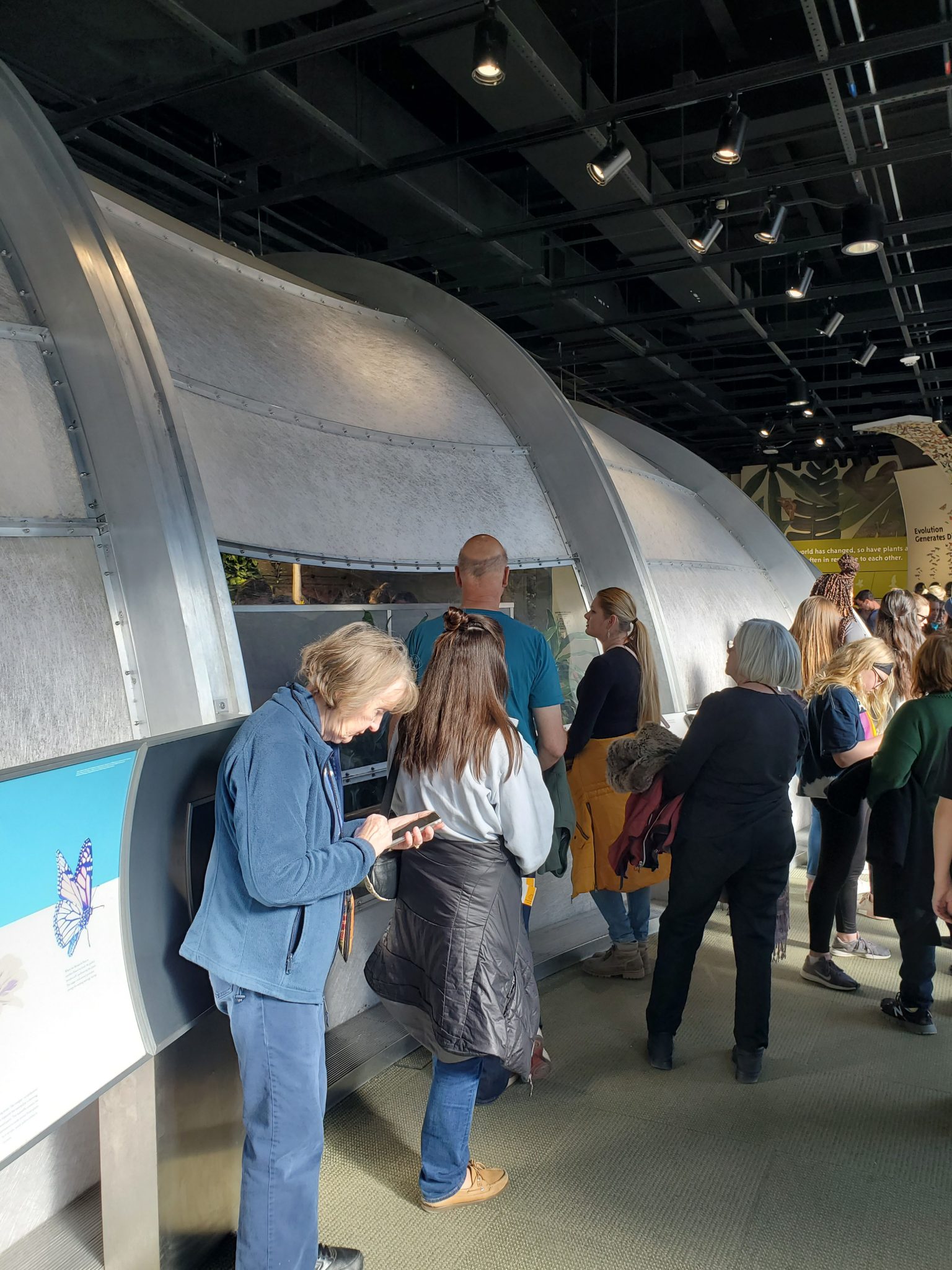
During much of the year you can also see butterflies outside the museum at the Smithsonian Pollinator Garden. Until 2016 this area was called Butterfly Habitat Garden. It is located between the Museum of Natural History and the National Gallery of Art.
Human Culture
In addition to animals in general, there is a major focus on the human animal at the Museum of Natural History. This is found in three major exhibits: African Voices, Hall of Human Origins and Eternal Life in Ancient Egypt (aka mummies).
African Voices and the Hall of Human Origins are next to each other on the main floor. The smaller Egypt exhibit is upstairs between Bone Hall and Insect Zoo.
The Egypt exhibit contains 3 human and 16 animal mummies. There are also many ancient artifacts from Egyptian tombs. Interactive exhibits show the mummification process and there are also examples of facial reconstruction to indicate what a person looked like in life.
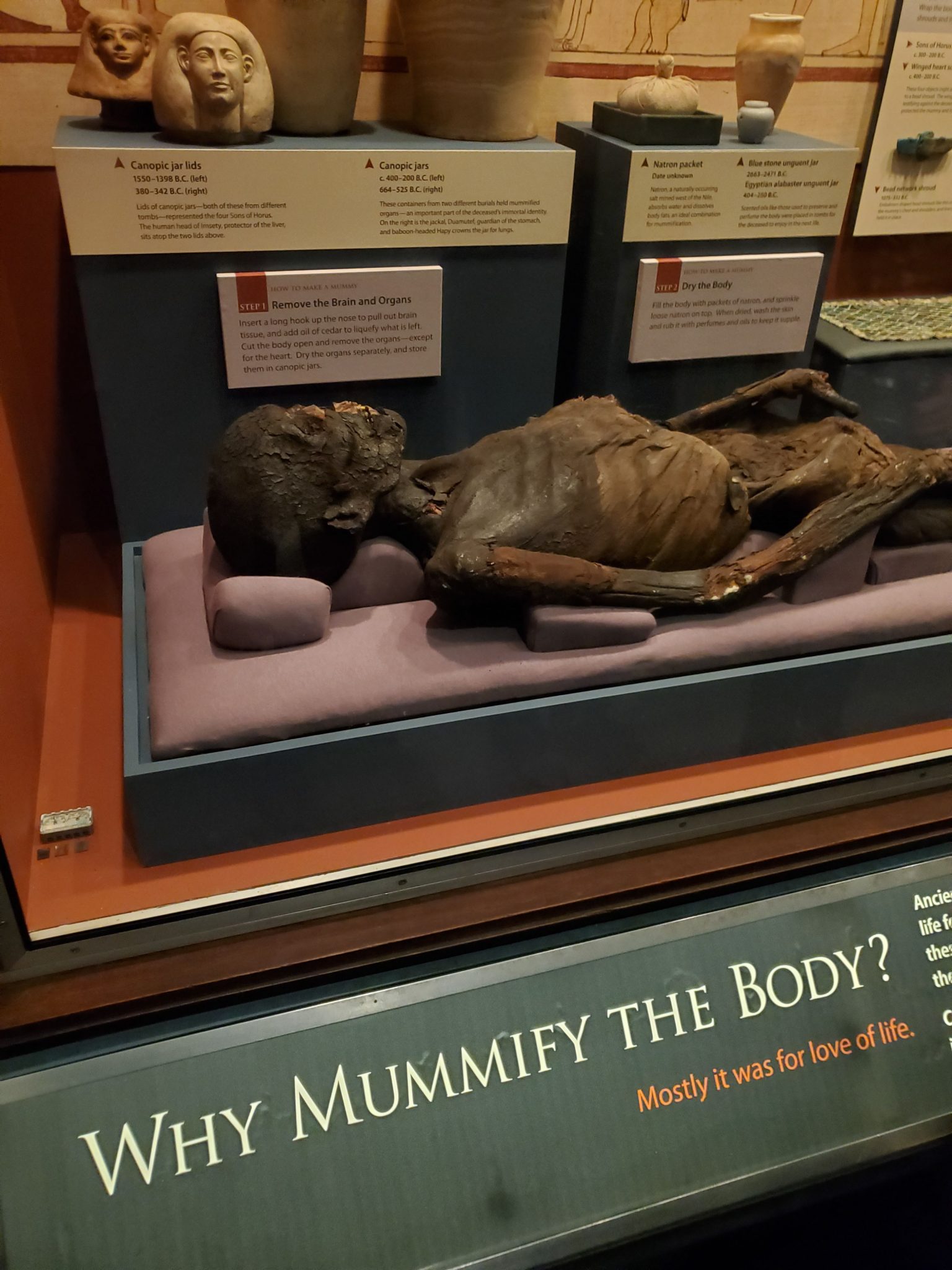
African Voices is a 6,500 square foot exhibit that opened in 1999. The focus is on the impact of African culture. There are listening stations where one can hear stories and music told by Africans. Films in the small theater focus on the slave trade and the struggle for freedom.

Next door to African Voices and Hall of Mammals is the David H. Koch Hall of Human Origins. This 15,000 square foot exhibit opened in 2010. The focus is on tracing 6 million years of human evolution. Skulls are on display and there is an interactive station where you can see what you would look like as an early human. There is also the only original Neanderthal skeleton in the U.S. (of course Neanderthals never lived in North America).
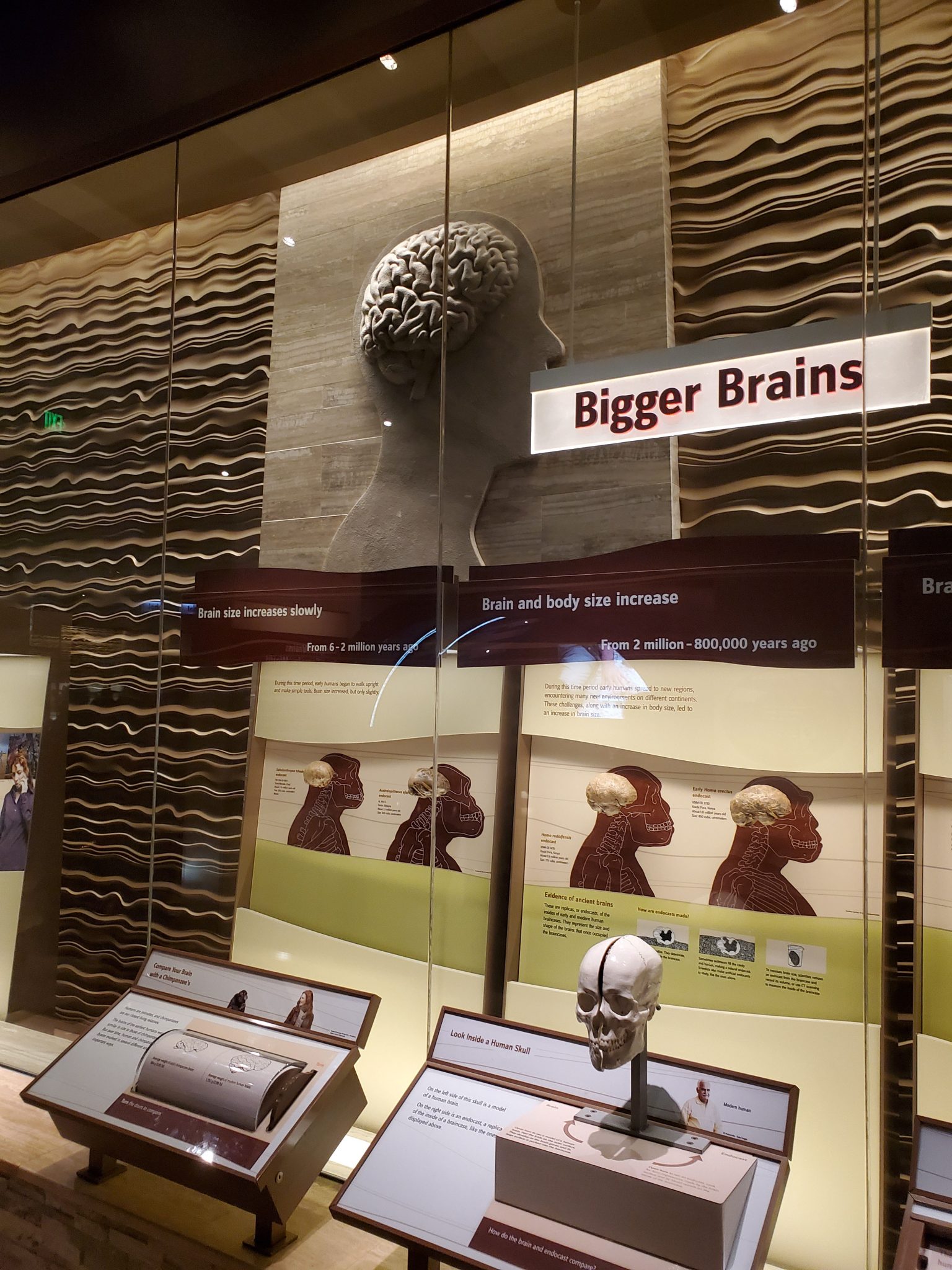
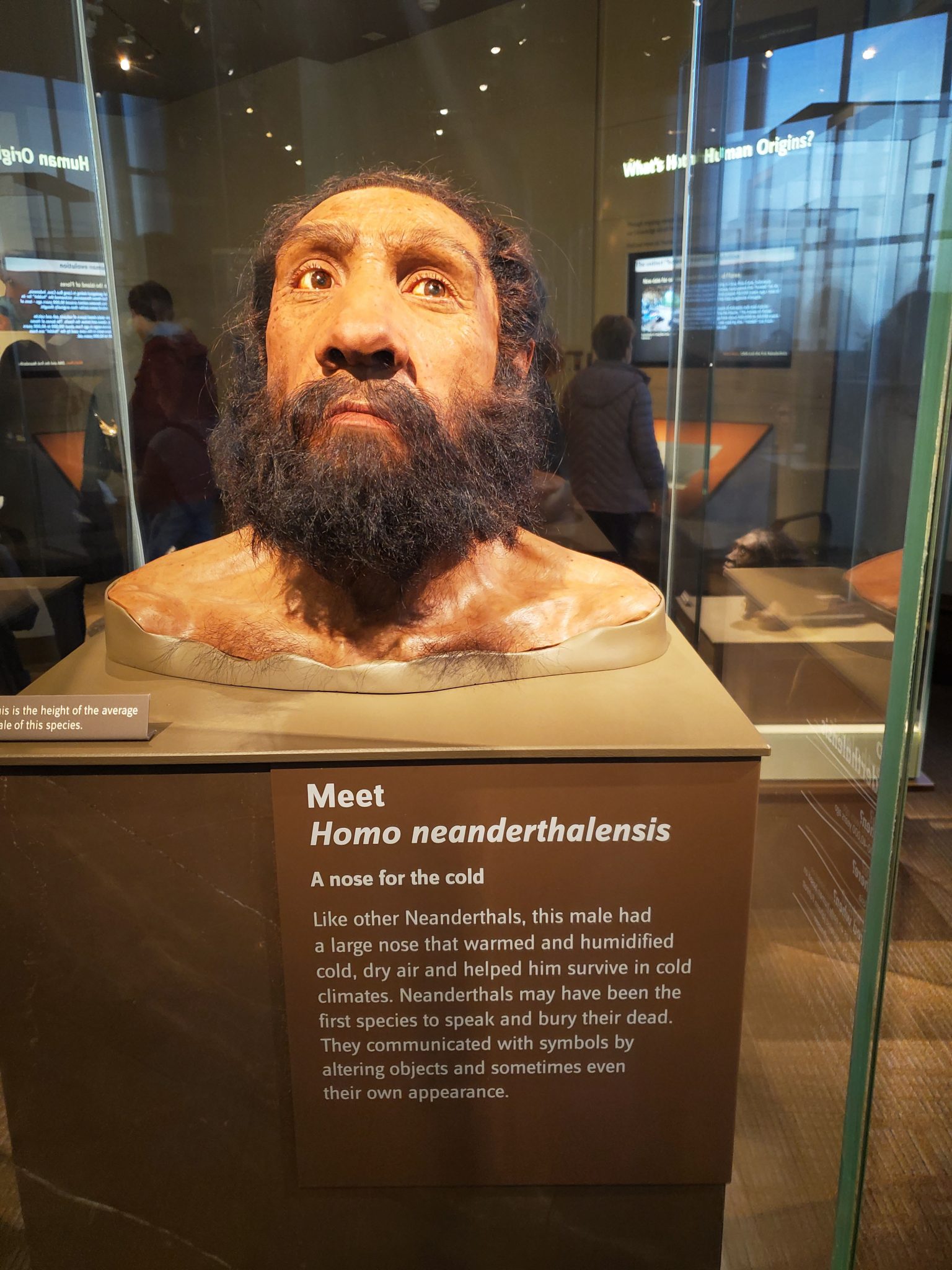
Geology
The geology side of the Museum of Natural History tends to appeal to an older audience. However, if you are interested in geology you could spend hours here.
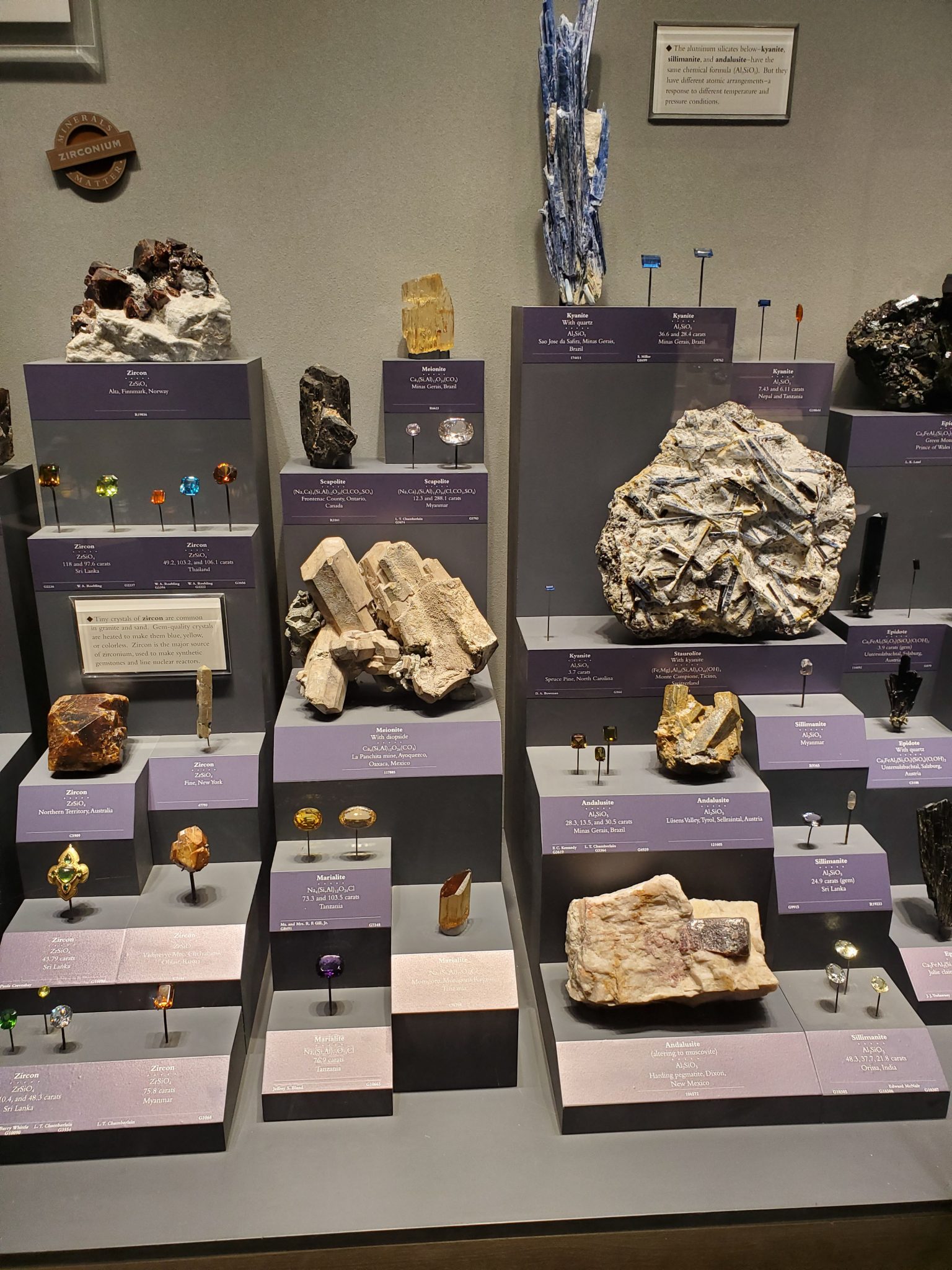
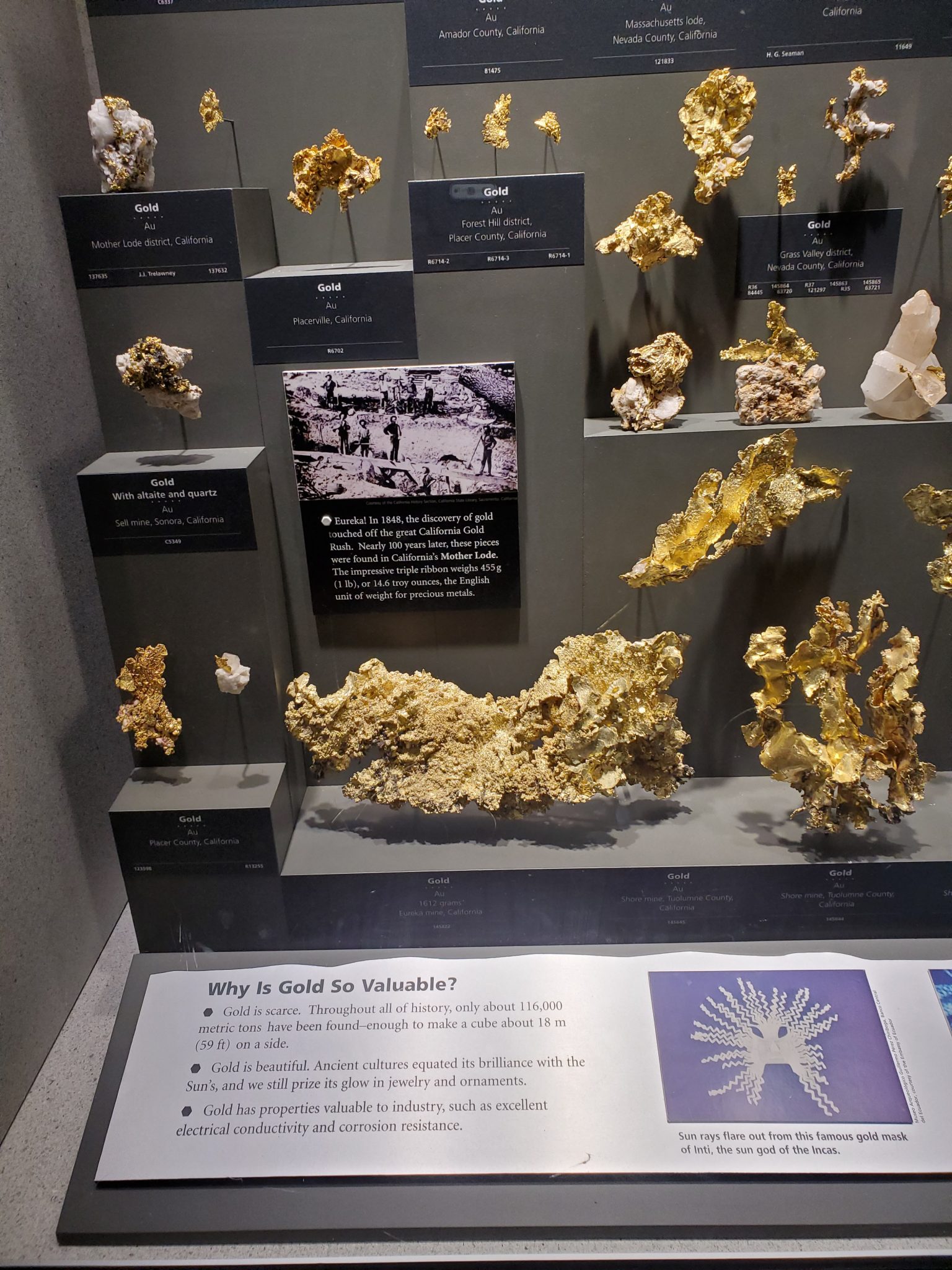
An entire 20,000 square foot wing of the second floor is devoted to gems and minerals. This includes a gift shop. One trivia point I always find interesting is that all the gold ever discovered in the world would fit in a cube 60 feet on each side.
The biggest attraction is the 45.5 carat blue Hope Diamond. This supposedly cursed diamond is located in the Harry Winston Gallery next to the entrance to the main exhibit. Winston gave the diamond to the museum in 1958.
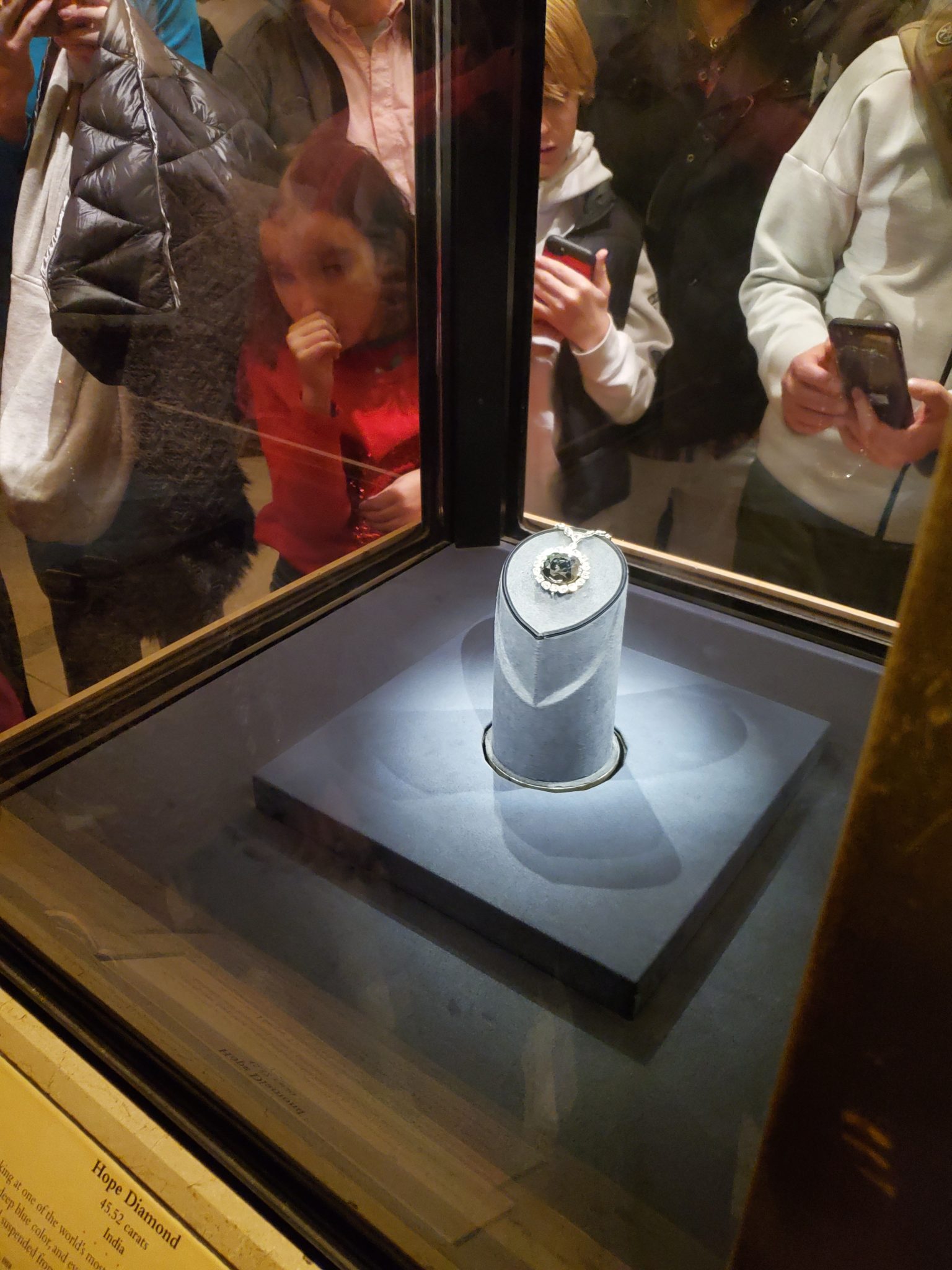
The official name of the full exhibit is the Janet Annenberg Hooker Hall of Geology, Gems and Minerals which opened in 1997. There is about every type of rock, gem and mineral you could hope to see. Exhibits on mining feature replicas of 4 real-life mines.


As you enter the geology section the focus is on volcanoes, earthquakes and meteorites. One exhibit looks at Devil’s Postpile National Monument in California. This incredible display of basalt is next to one of our favorite ski areas, Mammoth Mountain. It is closed in winter but we love to visit in the summer.
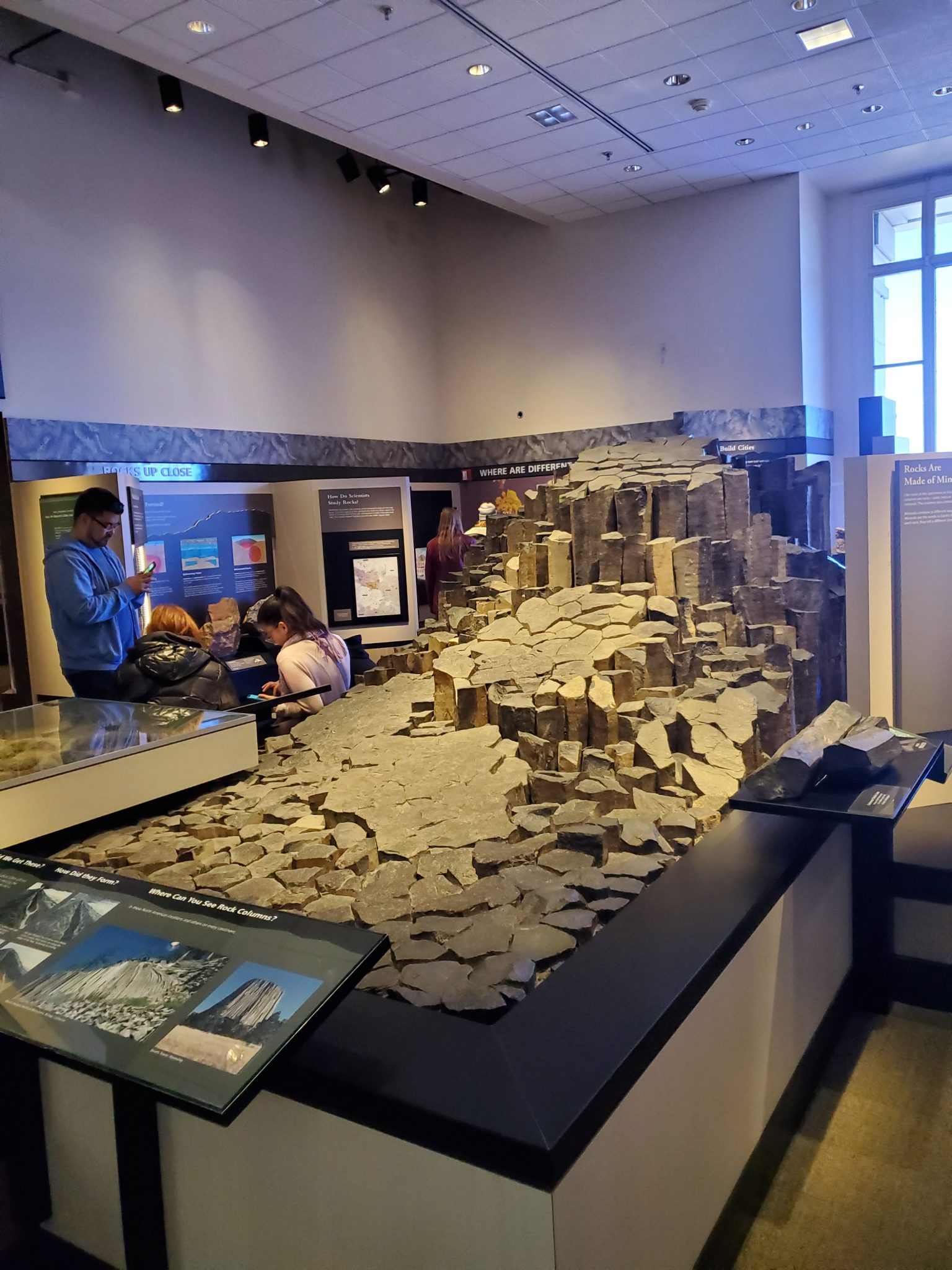
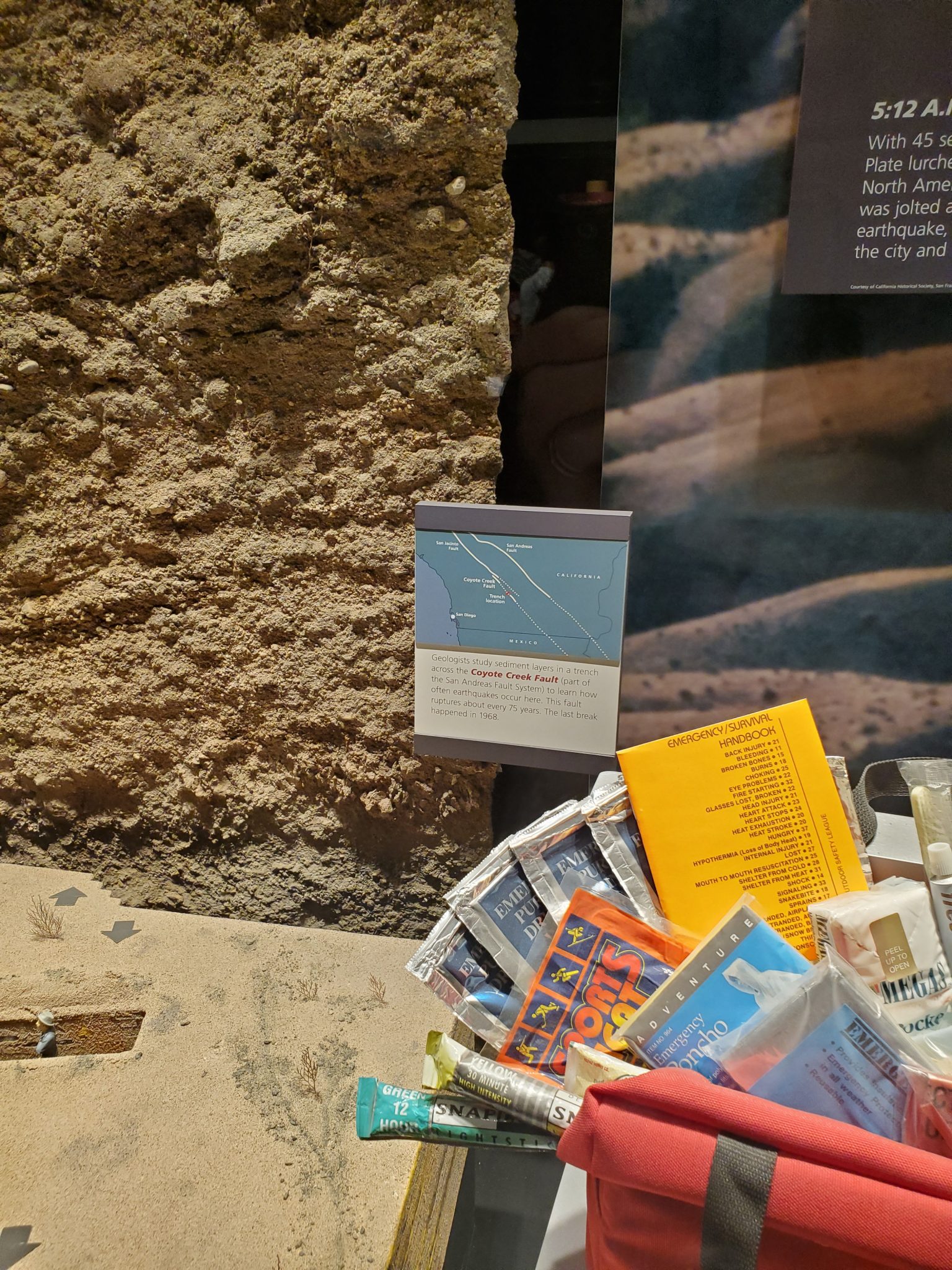

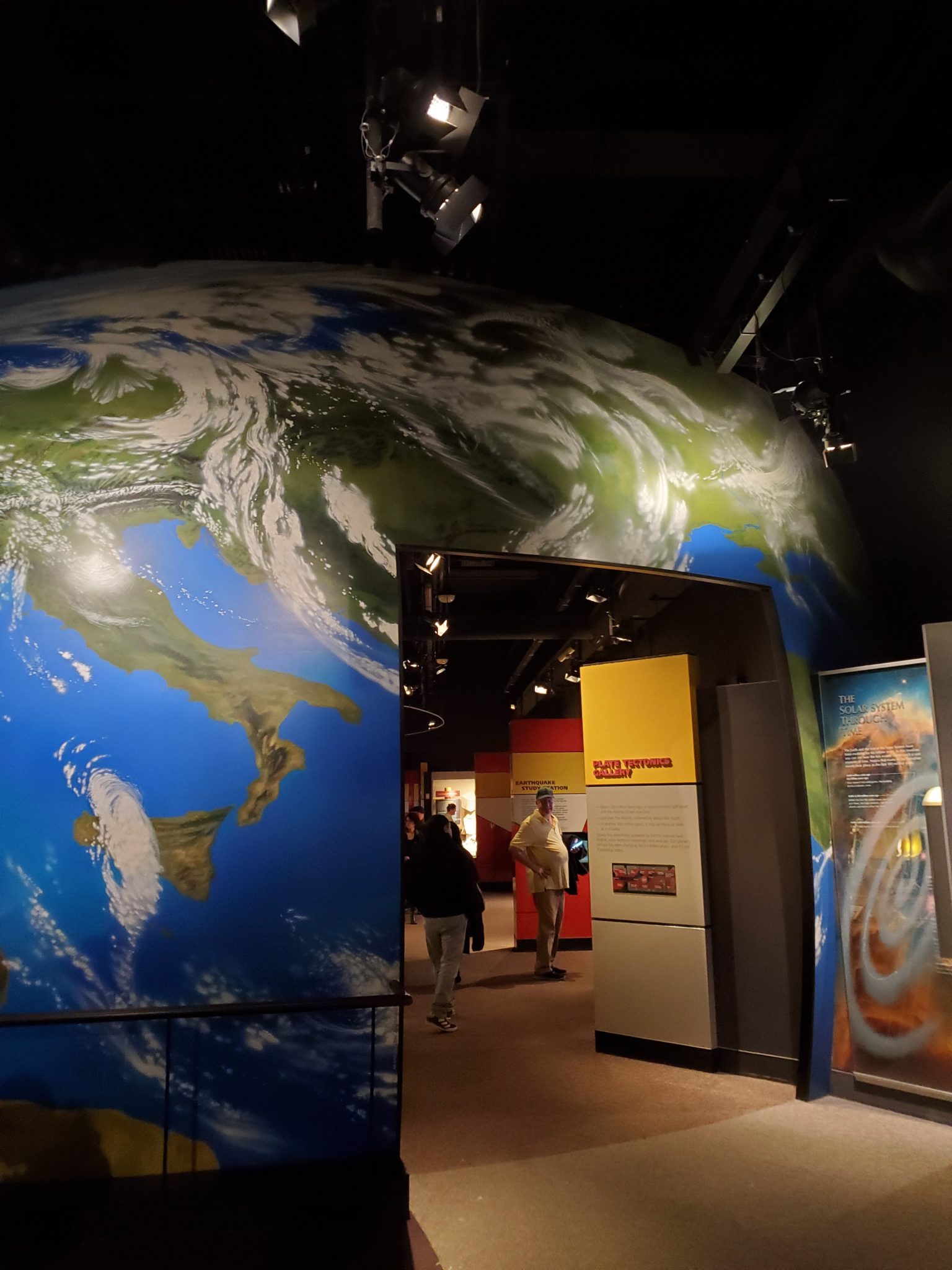
Special Exhibits
Most of the exhibits at the Museum of Natural History are permanent. However, there is usually two or more temporary exhibits that can sometimes be around for several years. Currently these are located on the second floor.
The Objects of Wonder exhibit features a wide range of objects that do not necessarily fit into the rest of the museum’s themed areas. Obviously with 145 million specimens there is a lot to display.
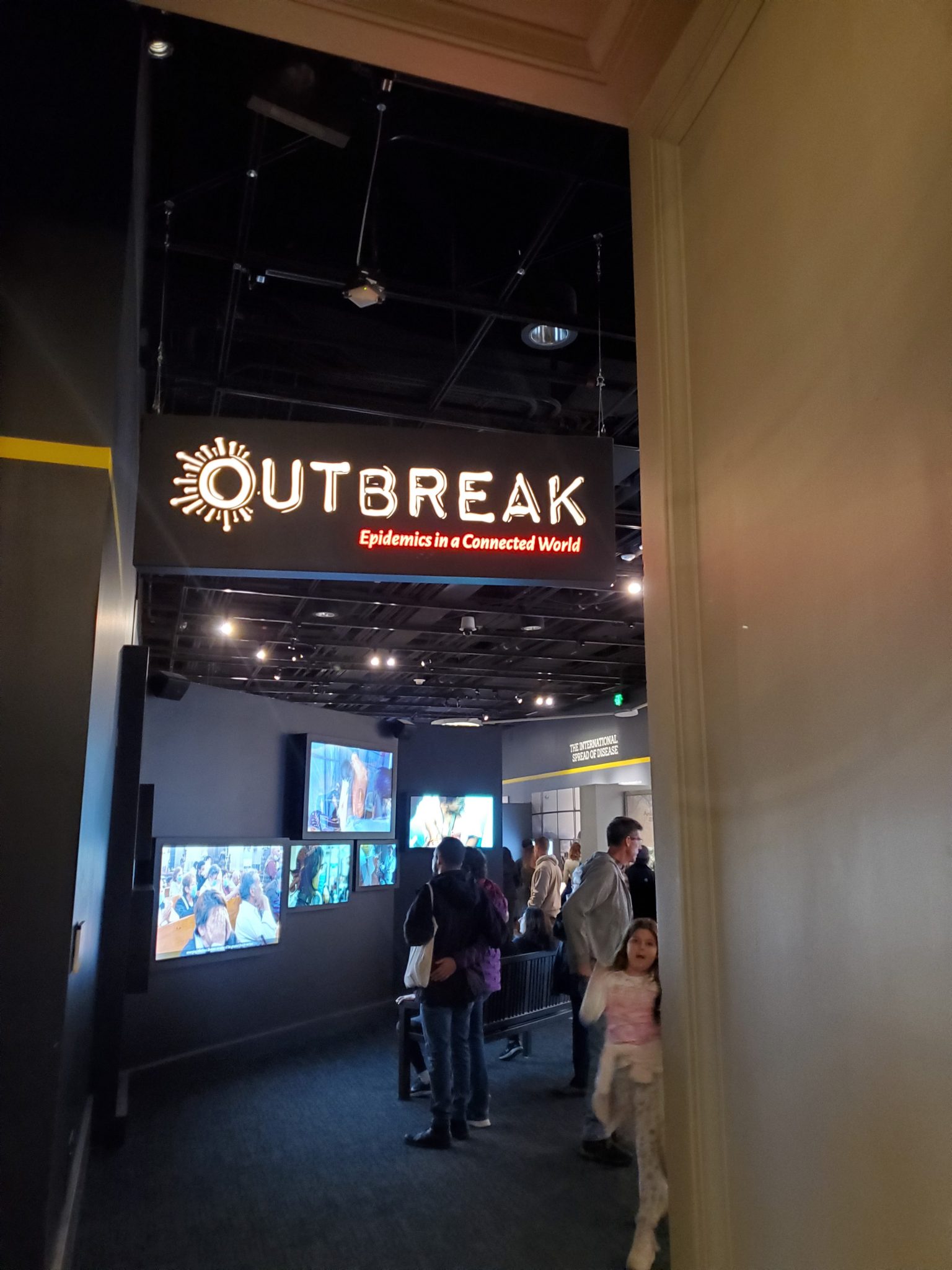
From 2018 to November 2021 the Outbreak: Epidemics in a Connected World Exhibit is on display on the second floor. For the medical fans in our family this was a favorite. Of course, the topic is not pleasant.
Dining
Planning where to dine is crucial to a successful Smithsonian visit. This is especially true when you have young children.
Unfortunately, there are very few restaurants in the heart of the National Mall. Every major Smithsonian museum has its own dining area. The only other option are food trucks that line the entrance to the museums.
Over the years we try and plan our visits so we can walk off the mall for food. Our favorite is the Potbelly Sandwich Chain which has multiple locations a few blocks from the mall. This has become a regular tradition and we have even developed a recipe for our own Potbelly Giardiniera. However, leaving the museum area can take a lot of time and sometimes it is best to eat at the museum. We have done that on many occasions for convenience.
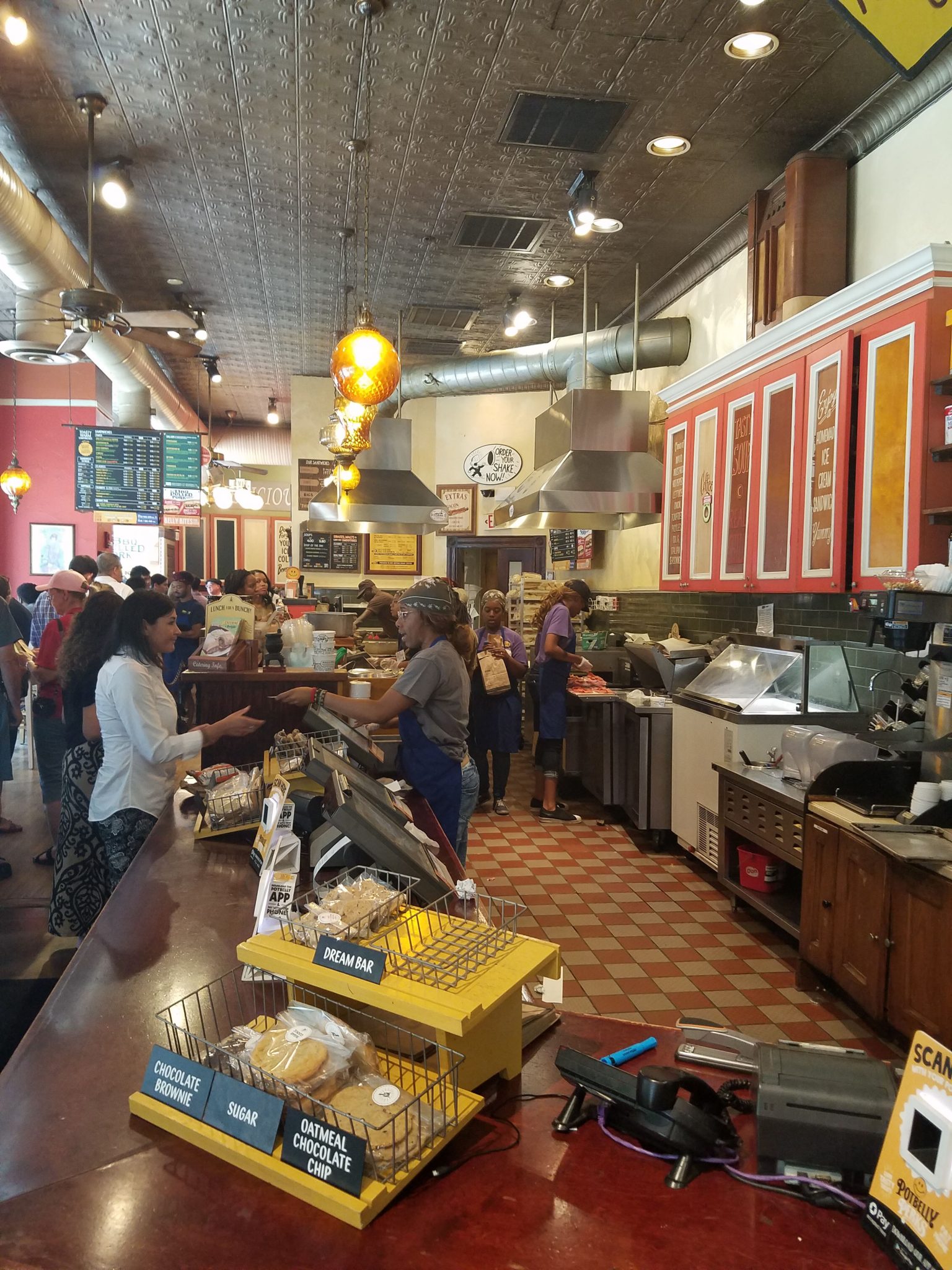
Generally, the museum food will be expensive and mediocre. Our favorite museum dining option is at the National Museum of the American Indian. This is located right by the Air and Space Museum but is not very convenient to the other museums.
The dining options at the Museum of Natural History include the Atrium Café on the ground floor and the Ocean Terrace Café above it on the first floor. We have eaten at both and can say they are typical theme park style food.
We try to actively avoid having to eat at the museums, but we visit these museums frequently. For most Washington D.C. visitors time will be in short supply. If you want to make the most of your time it is best to just grin and bear it and eat at the museum you are visiting.
DC Eater has a guide to restaurants near the Smithsonian museums. We have eaten at many of these places. However, the only one actually on the mall is the Sweet Home Café at the new National Museum of African American History and Culture. This museum is incredibly crowded and dining here is really not an option unless you are visiting the museum (which requires a timed ticket).
The Museum of Natural History is one of the most popular museums in the world for a reason. However, it can be overwhelming. Having a good plan of attack will make a huge difference in making a visit more successful. Part of this plan of attack is knowing when your group gets hungry and having a plan to handle it.
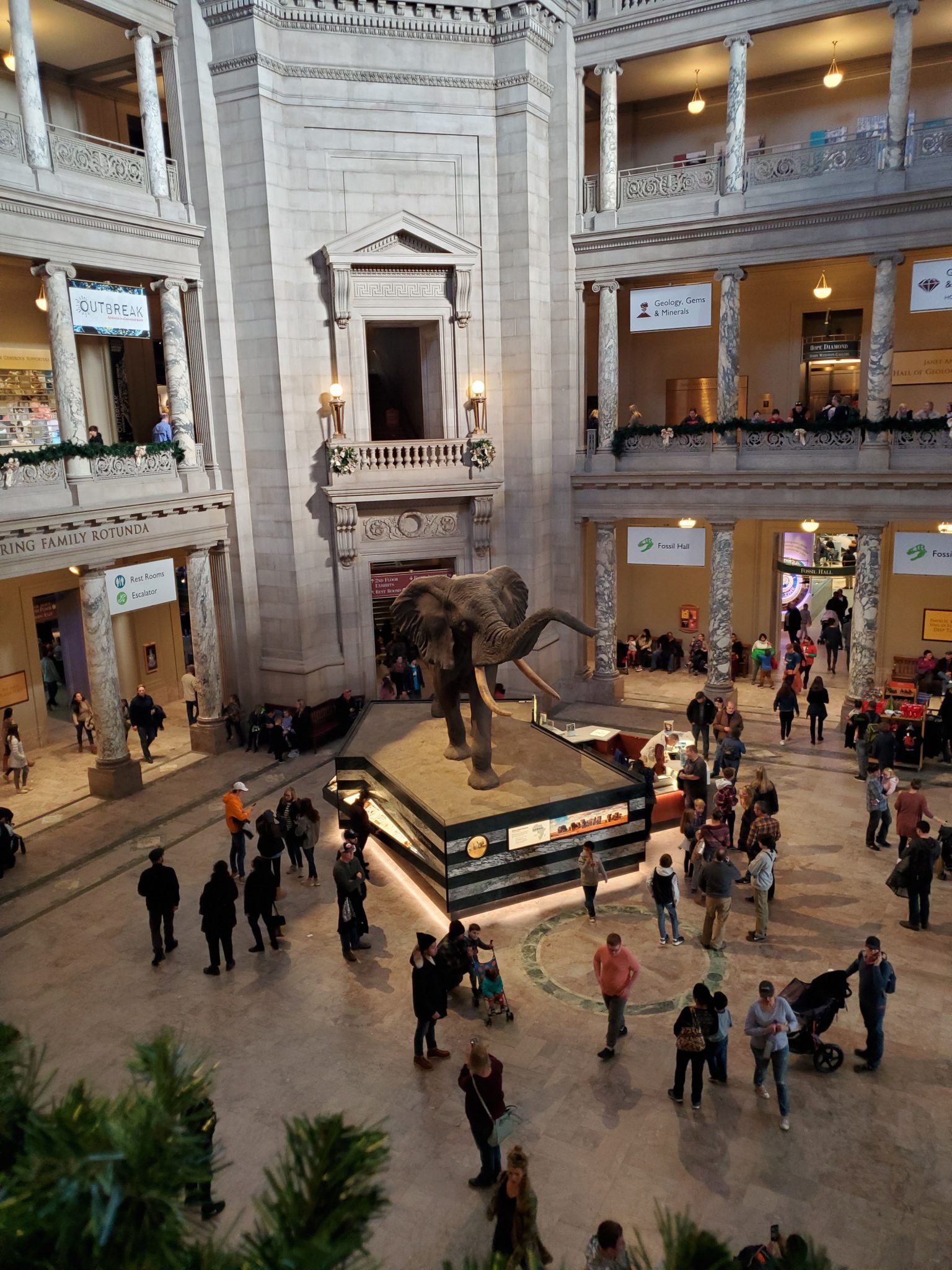
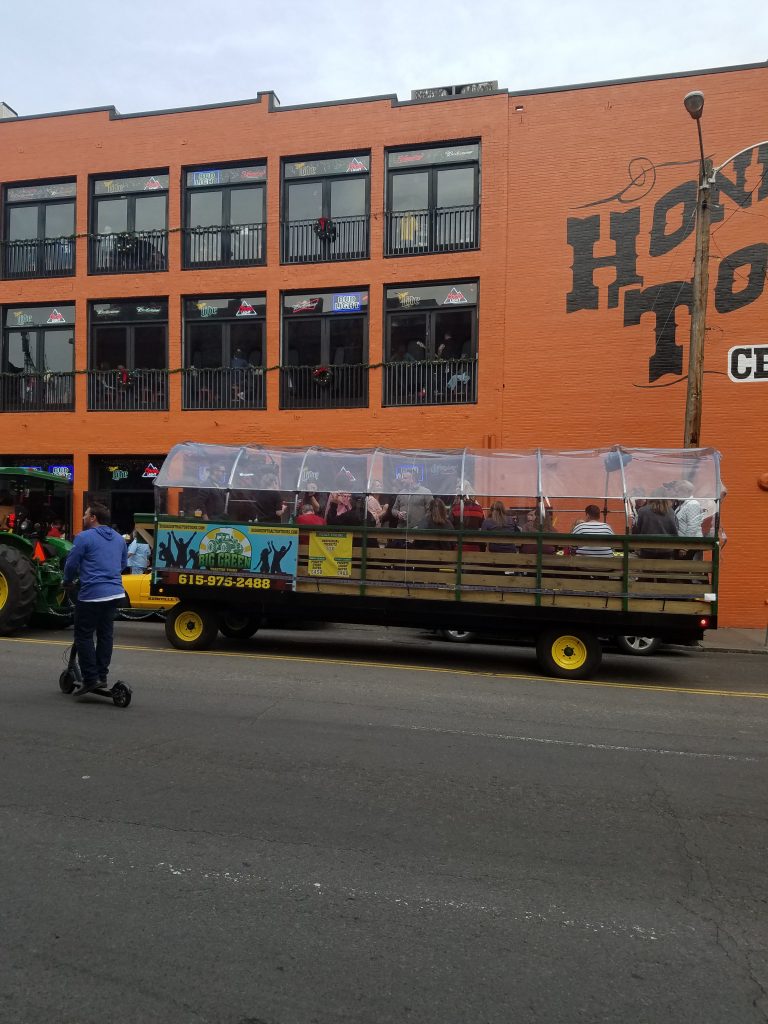
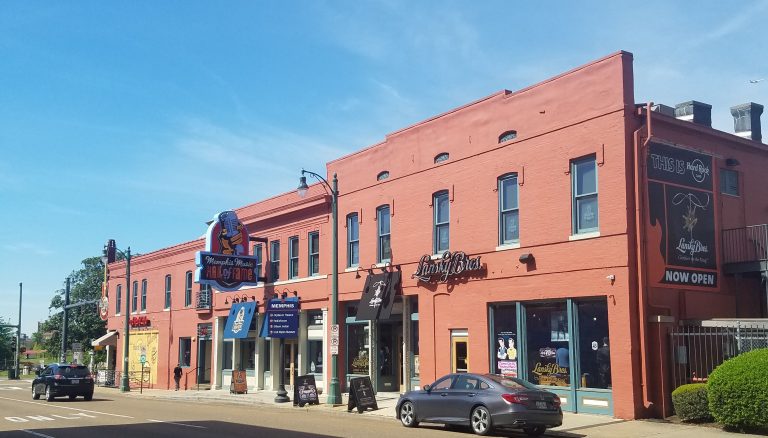
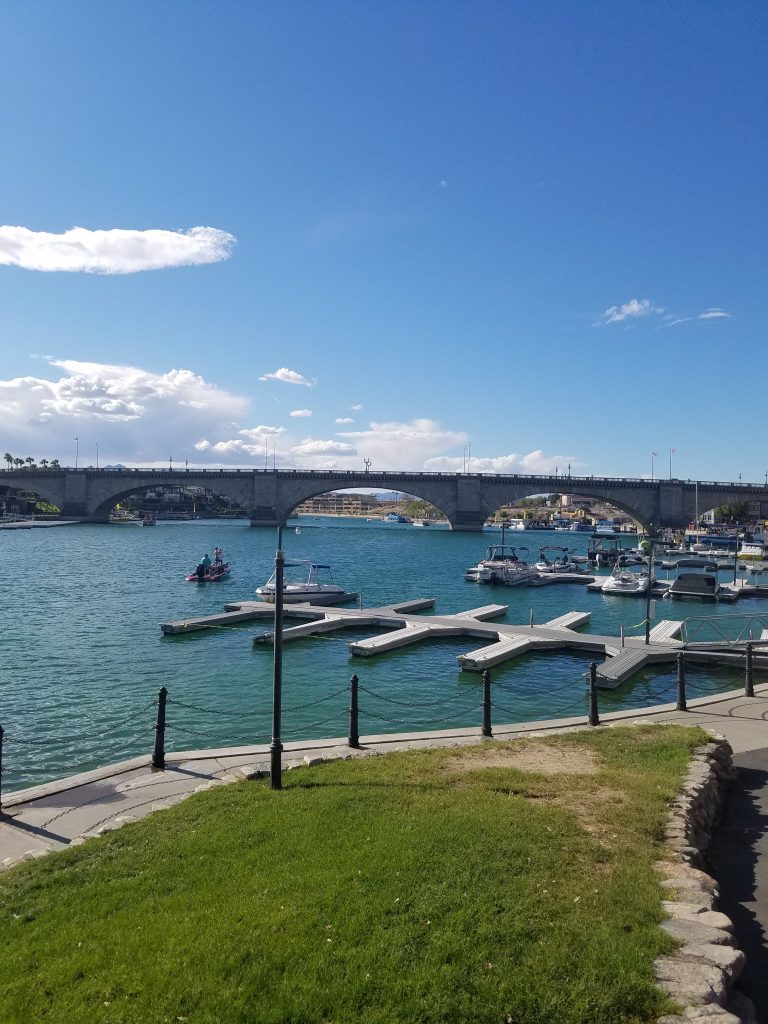
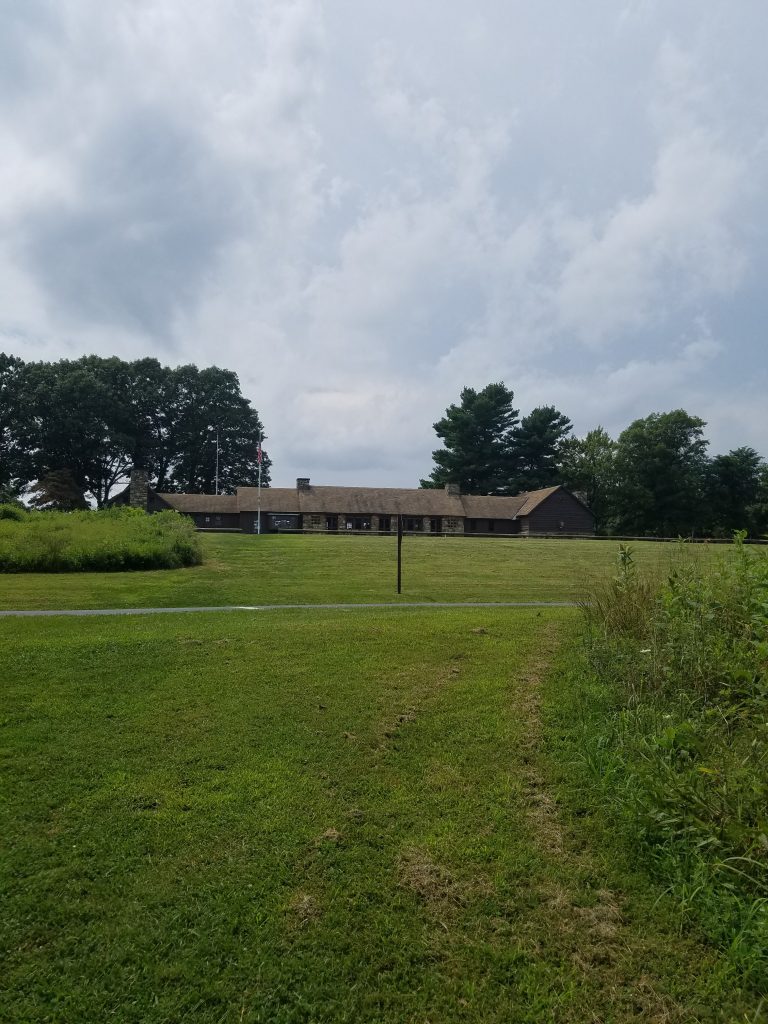
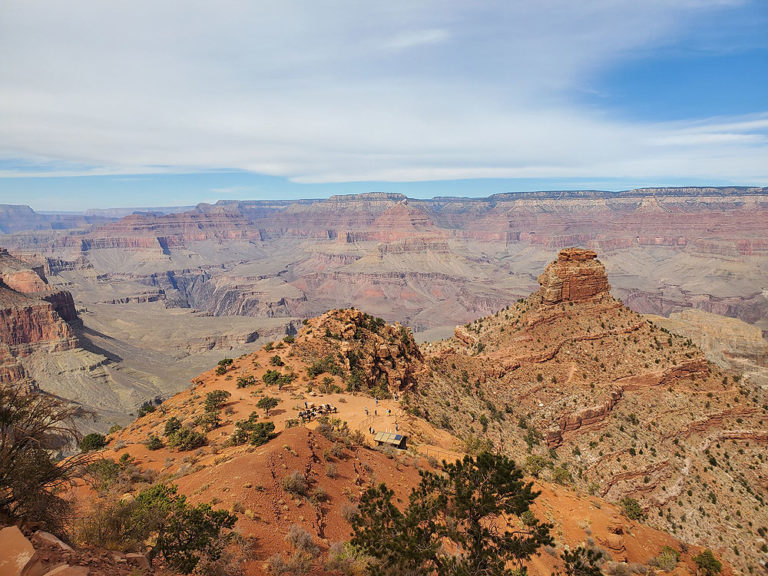

One Comment
Comments are closed.